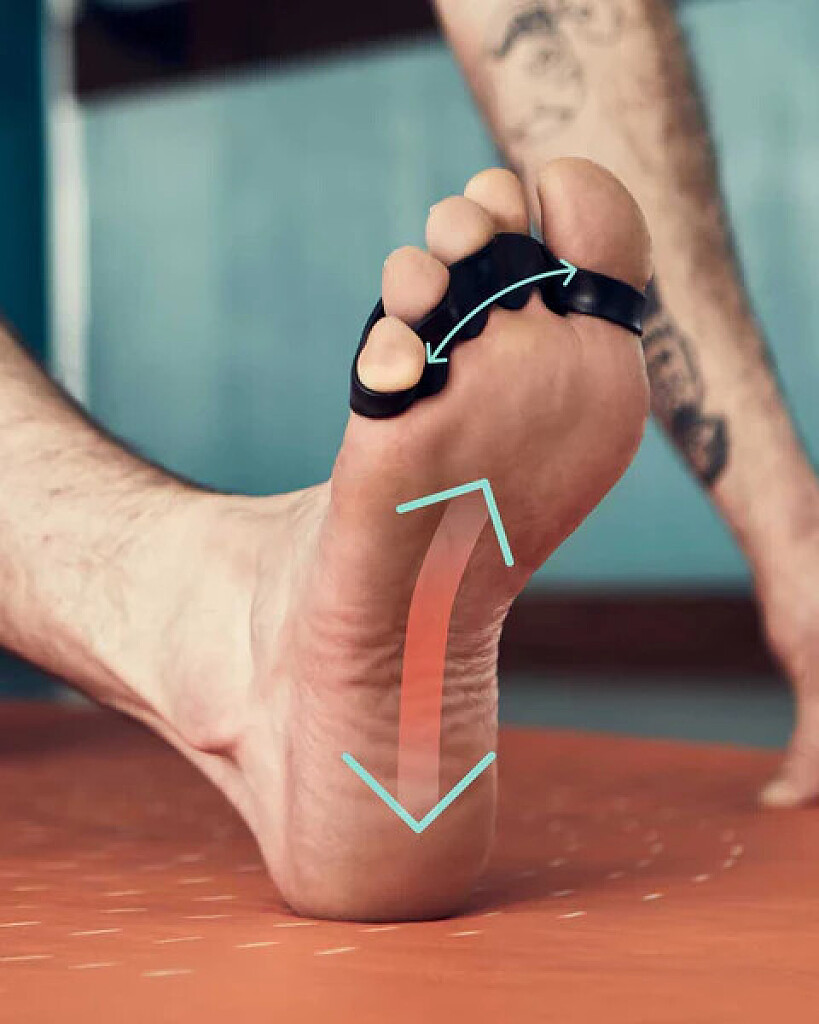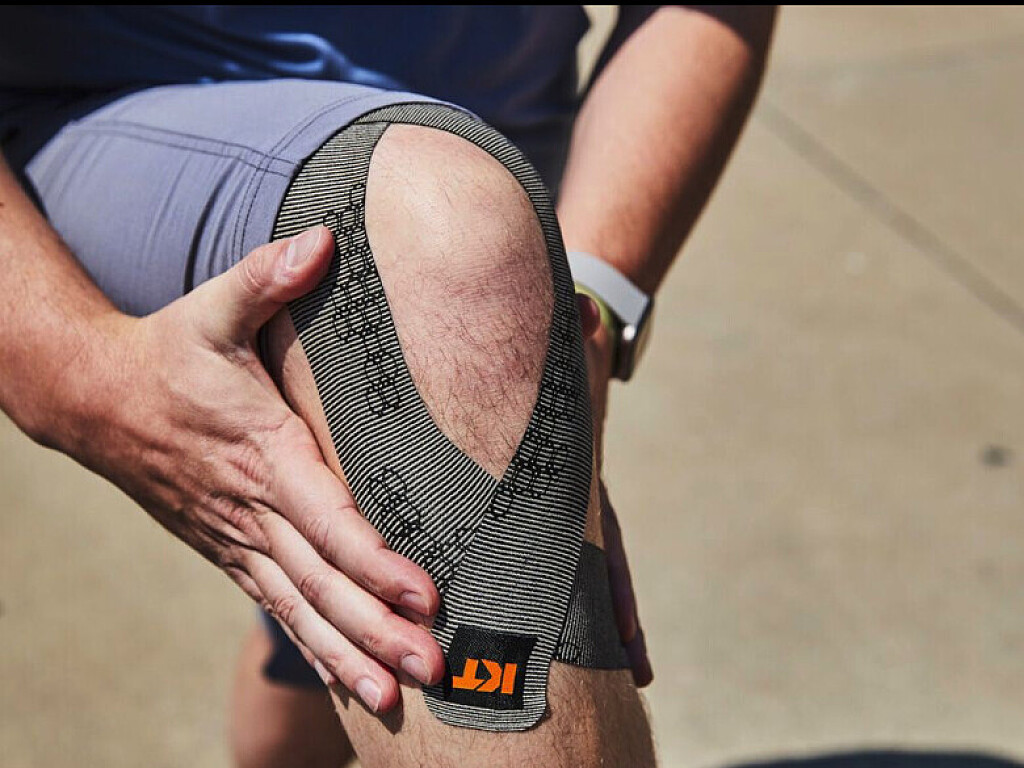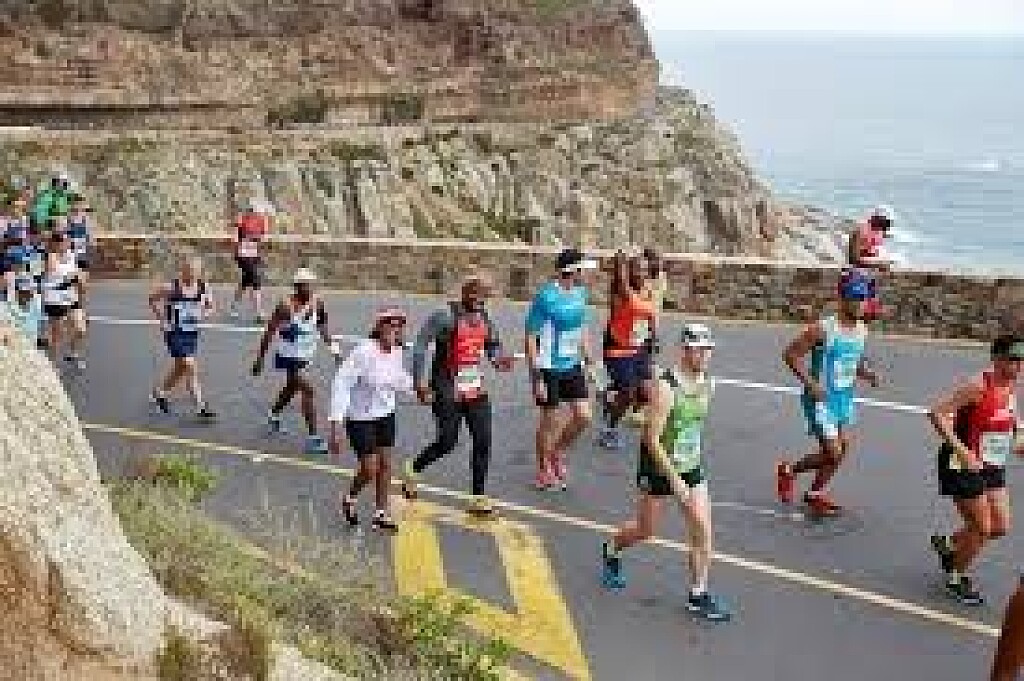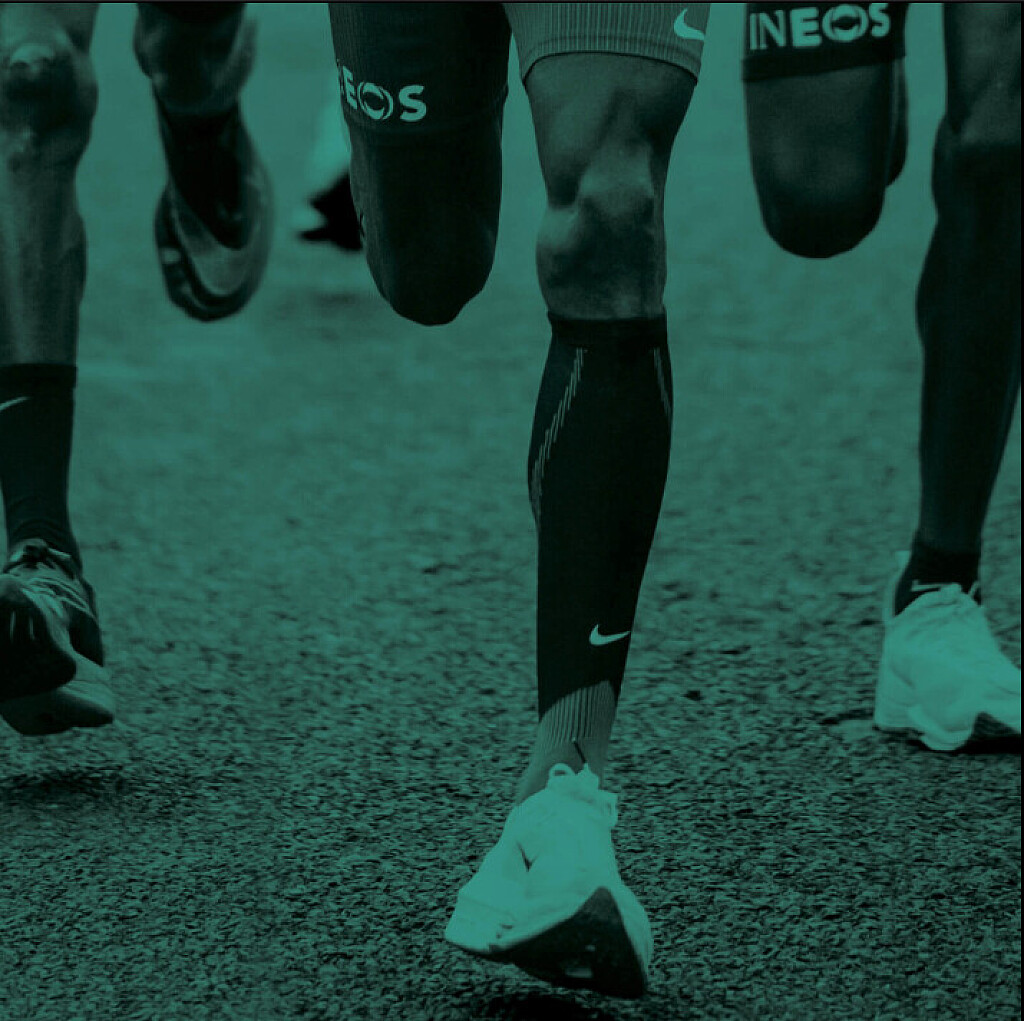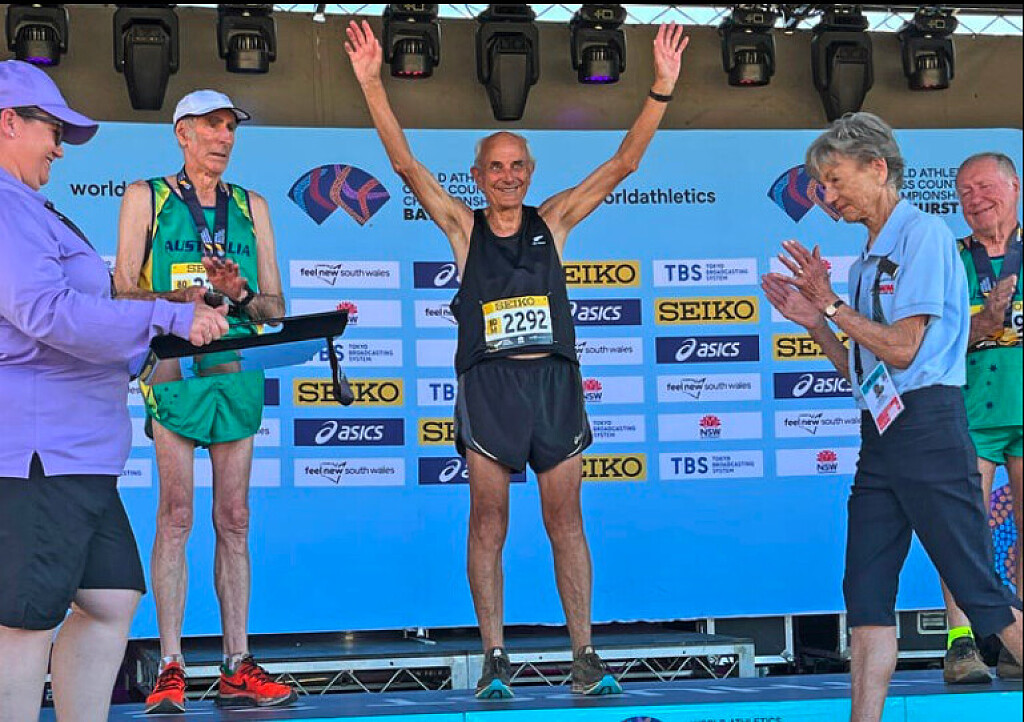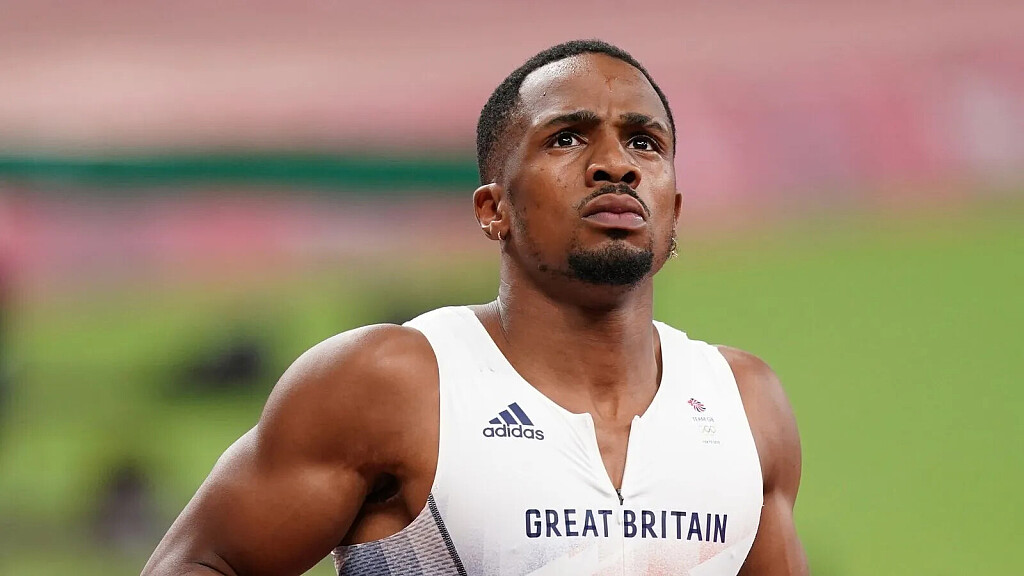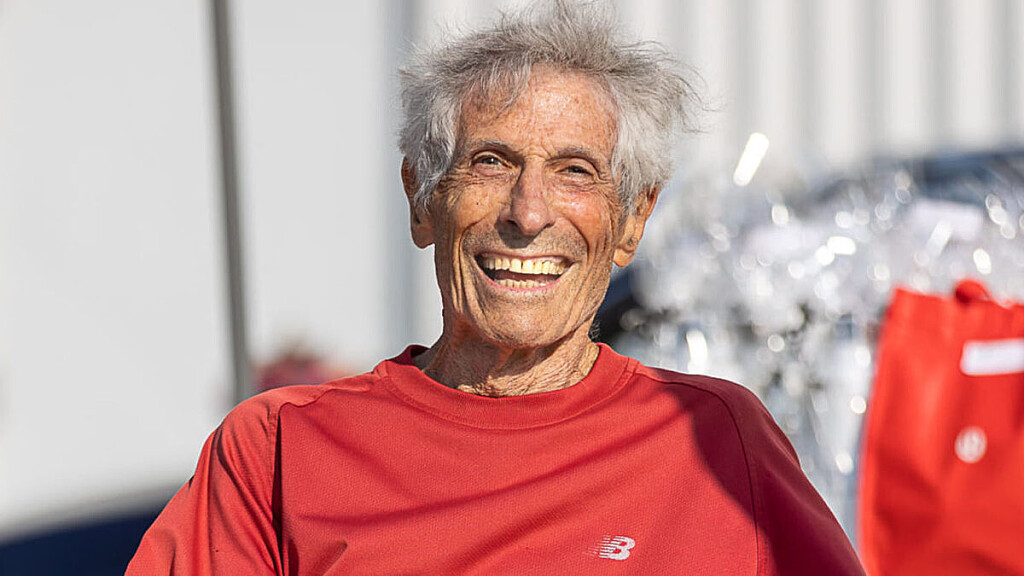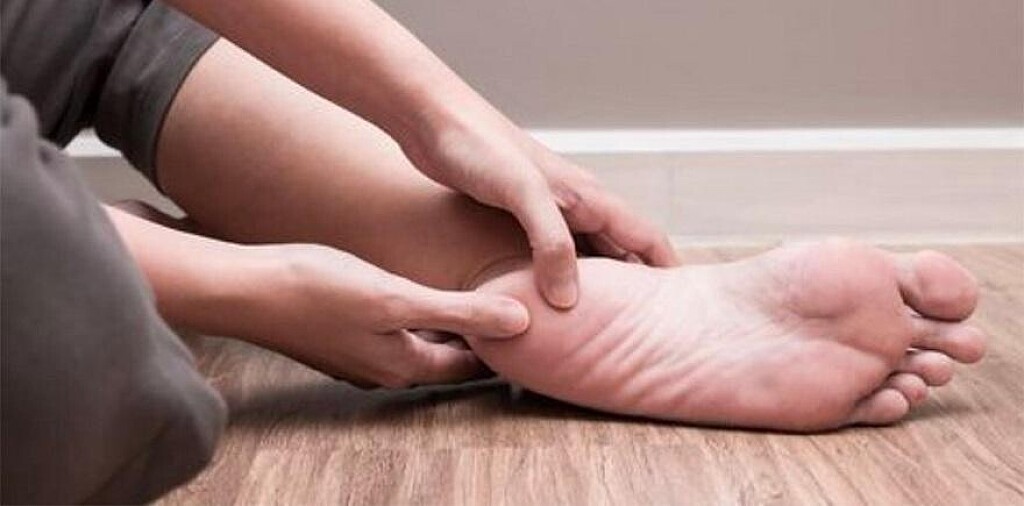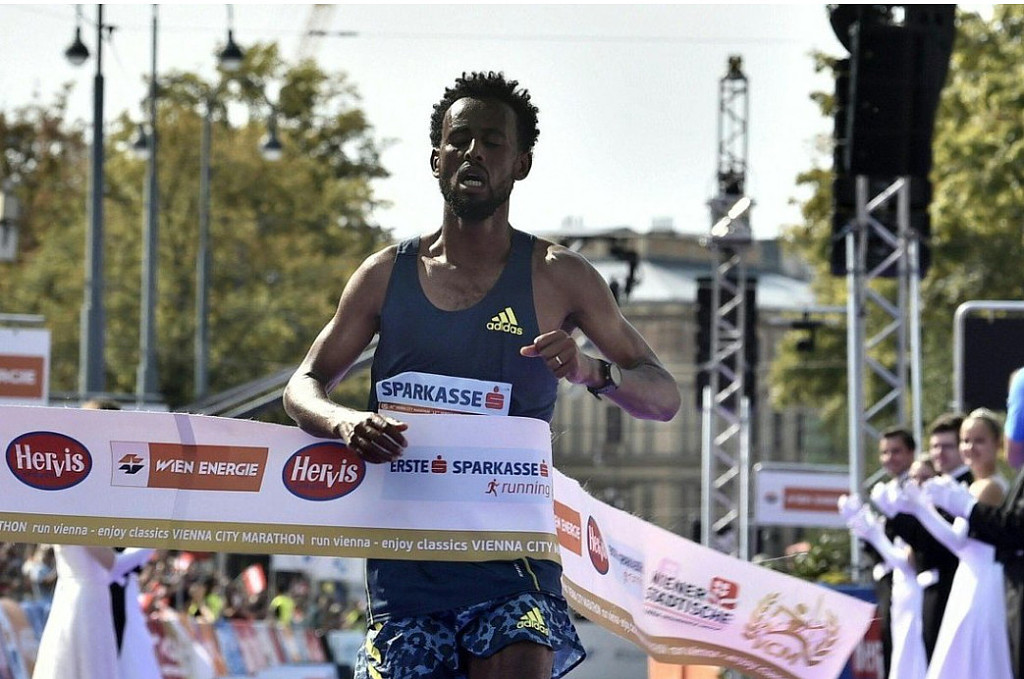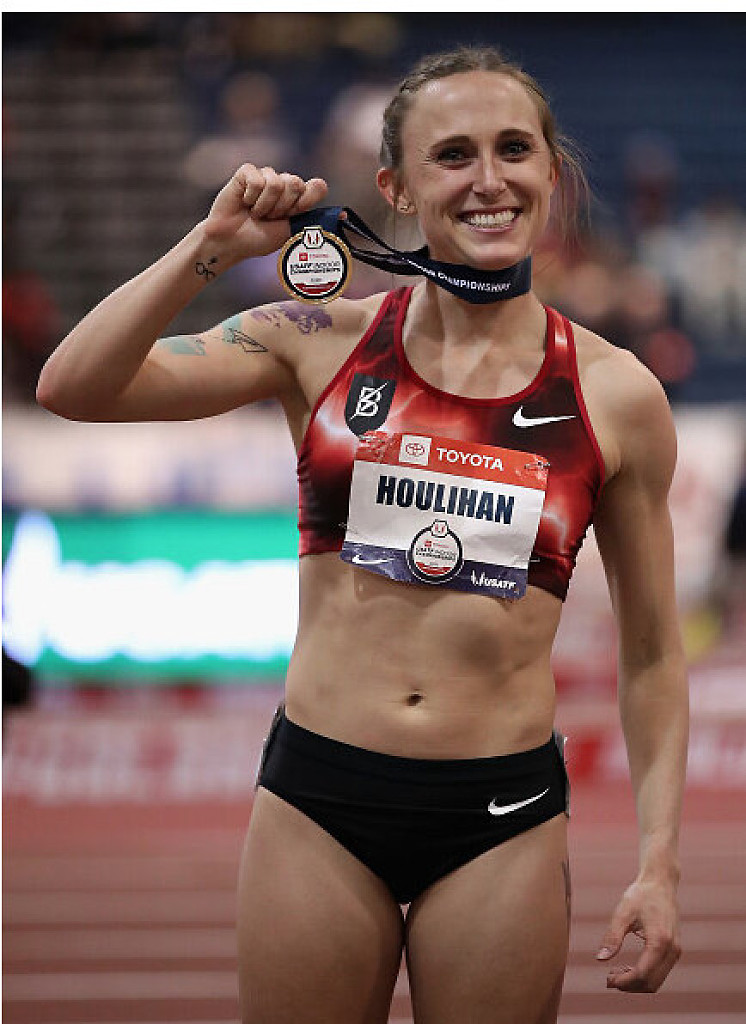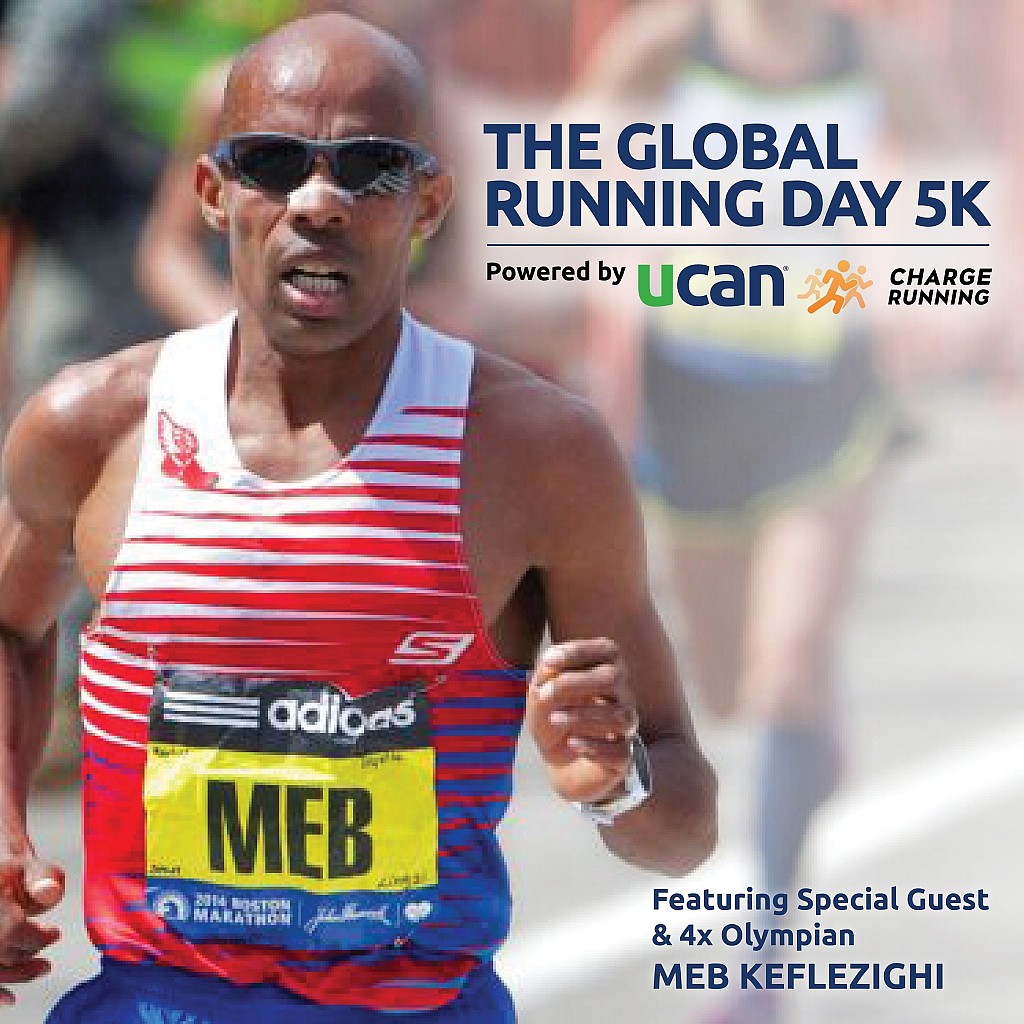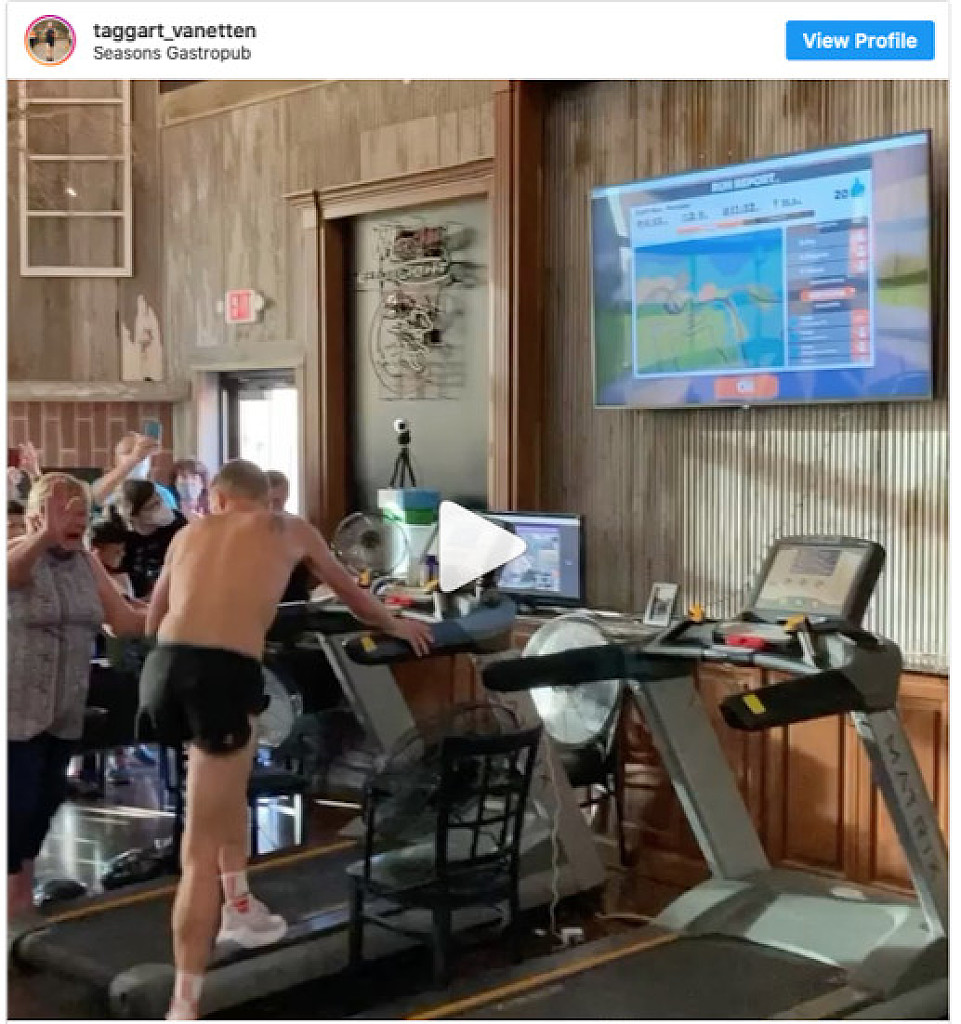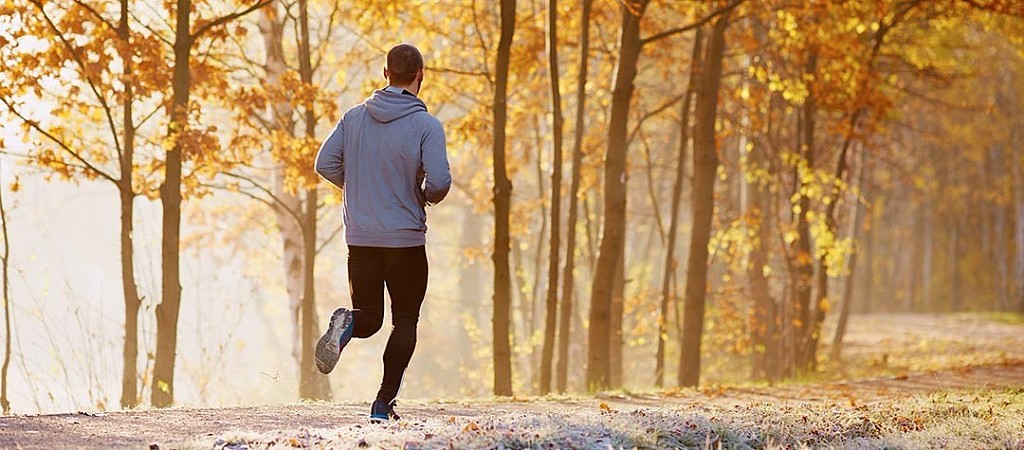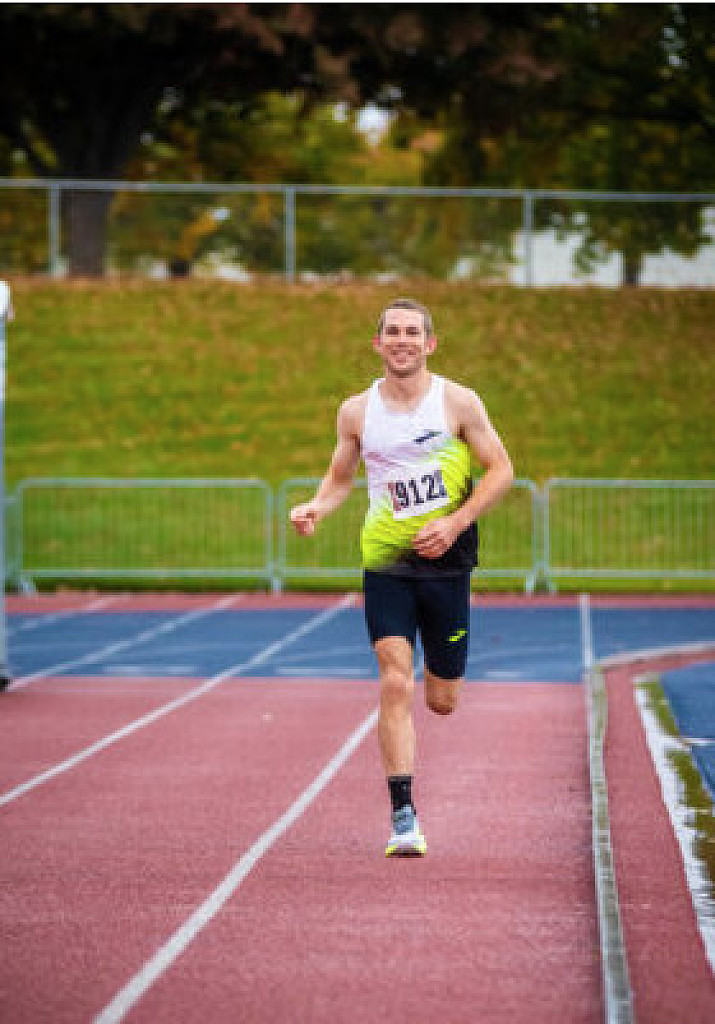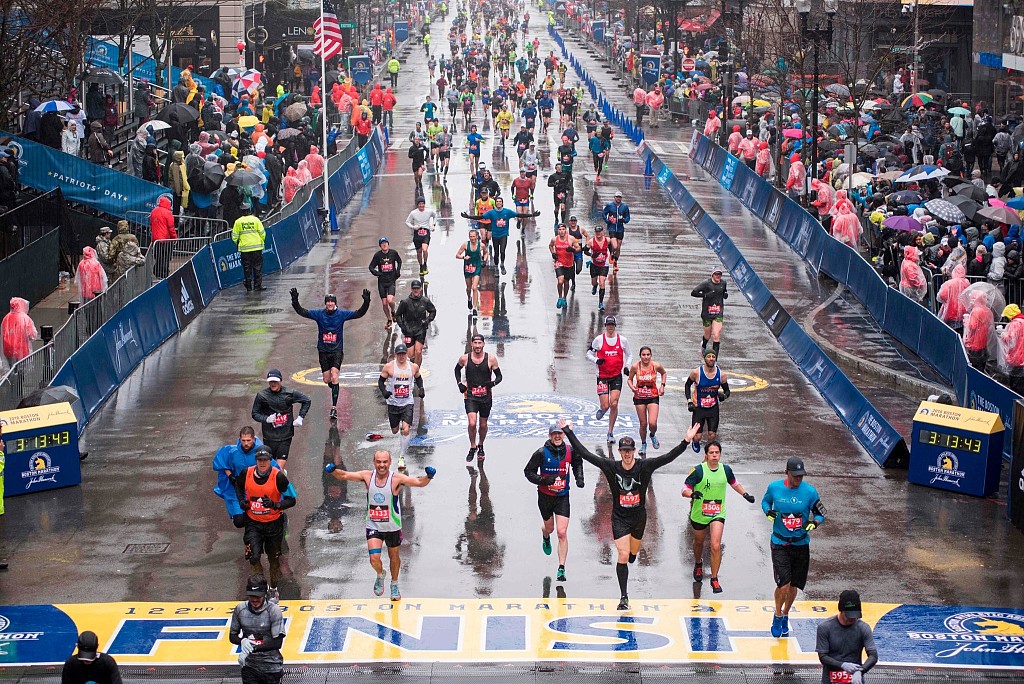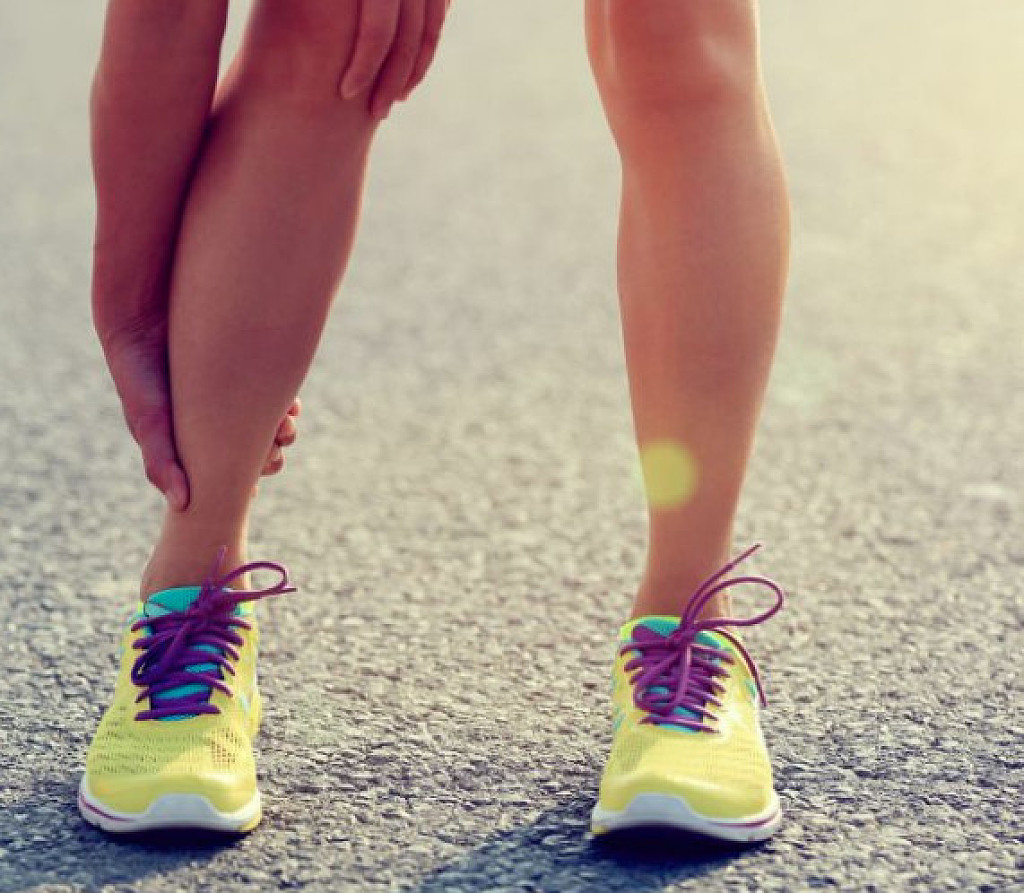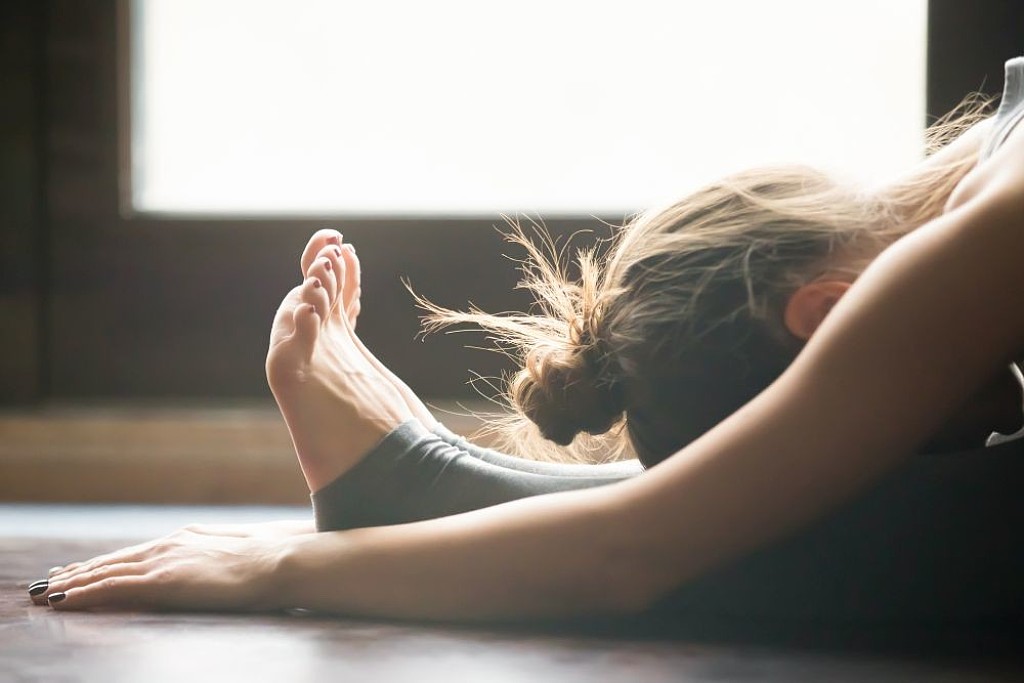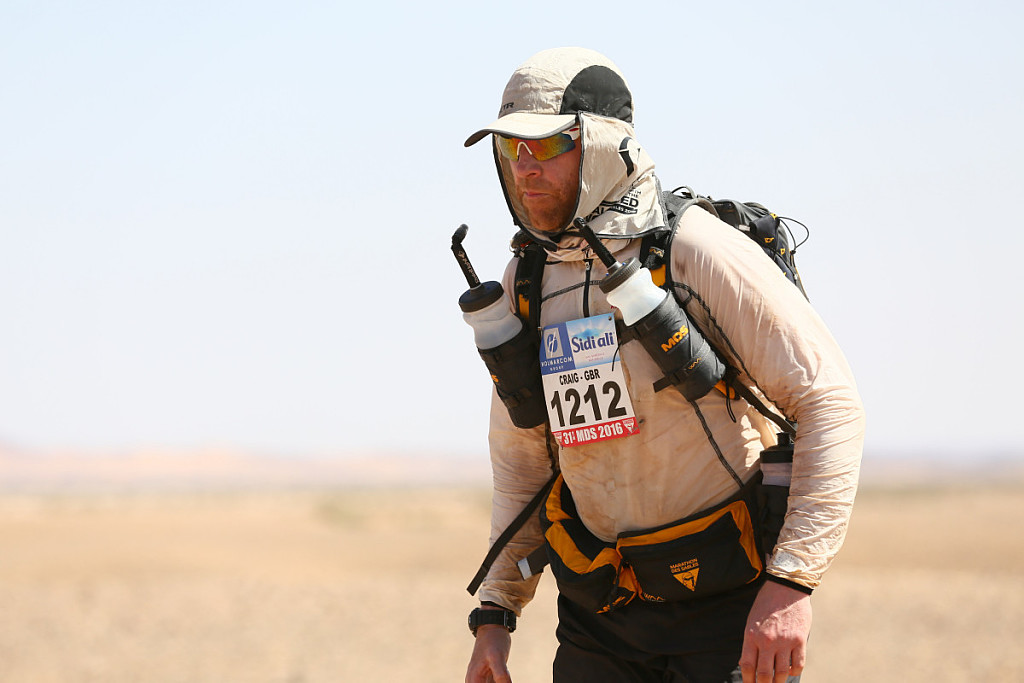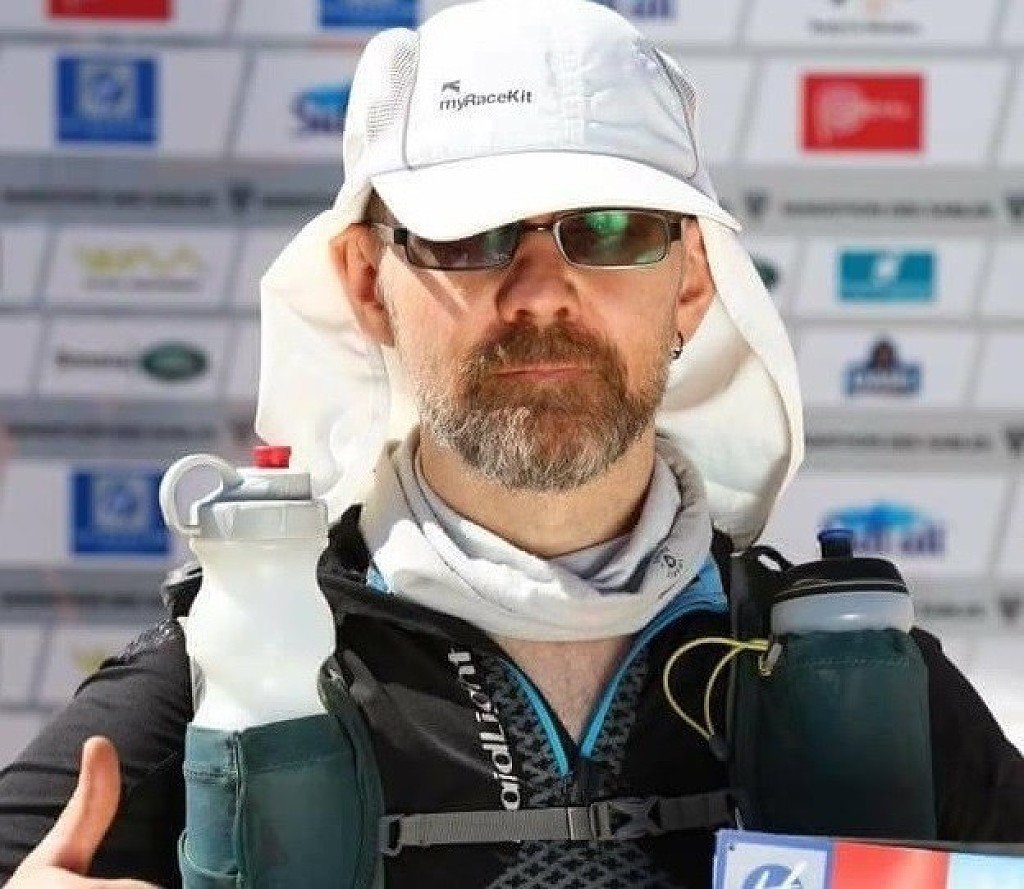Running News Daily
Running News Daily is edited by Bob Anderson. Send your news items to bob@mybestruns.com Advertising opportunities available. Train the Kenyan Way at KATA Kenya and Portugal owned and operated by Bob Anderson. Be sure to catch our movie A Long Run the movie KATA Running Camps and KATA Potato Farms - 31 now open in Kenya! https://kata.ke/
Index to Daily Posts · Sign Up For Updates · Run The World Feed
Articles tagged #Amazon
Today's Running News
Why toe spreaders may be your next great recovery tool
Inexpensive, small and simple to use (albeit funny-looking), toe spreaders are commonly associated with pedicures and bunions—but these small devices are now also hailed as essential tools for enhancing foot function and performance. Here’s why runners are increasingly turning to toe spreaders (also called spacers) for better foot health and improved foot flexibility.
Toe spreaders, usually made from silicon, can be purchased for $10 (or less) online, and are usually intended to gently realign the toes and restore their natural spacing. They can be worn while exercising and walking around, or only used when doing foot exercises and strengthening drills—and some research suggests they can lead to performance benefits for athletes, with enhanced efficiency, improved balance and proprioception and an increase in explosive output.
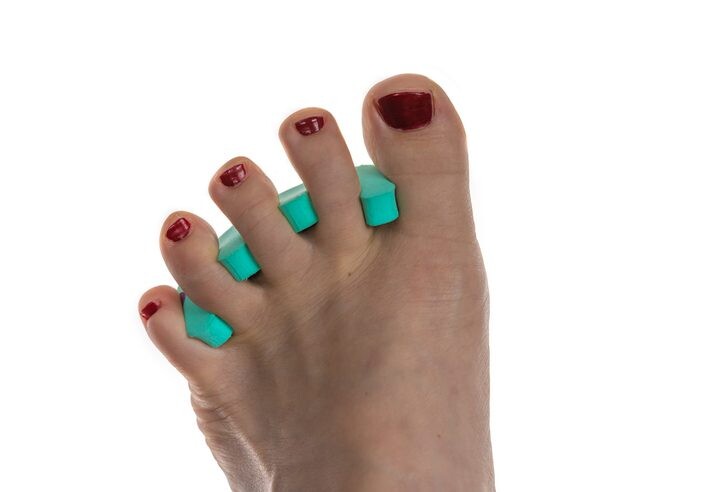
Enhancing foot functionality
In a recent article in The Wall Street Journal, Dr. Dennis Cardone, a sports medicine specialist at NYU Langone Health in New York City, explains that our feet should act like small tripods, with the centre of the heel, ball of the big toe and base of the baby toe all supporting our weight equally. When our feet are squeezed into tight shoes, the tripod becomes uneven and narrow, leading to balance problems and painful injuries like bunions and hammer toes. Runners and other active people may have more potential for injury.
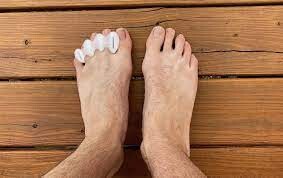
A new foot fad?
While Cardone says that wearing toe spreaders won’t prevent deformities, they can help relieve the pain and are a cheap and easy aid when contrasted with surgery or physical therapy. The simple gadgets can be purchased online from Amazon and other websites—and runners aren’t the only ones sporting them. Celebrities like model Ashley Graham are jumping on the bandwagon, posting photos of their toes in spreaders or while wearing toe-spreader socks.
Improved circulation for happier feet
As we walk, we should feel our toes (especially the big ones) press into the ground, Courtney Conley, founder of web-based foot health resource Gait Happens, explains to the WSJ. Strengthening the muscles of the feet and toes can lead to better overall foot stability and balance during running. Besides building strength and boosting alignment, spacers can also improve blood circulation by creating space between the toes, which promotes healing and reduces the risk of inflammatory conditions like plantar fasciitis. Toe spacers can also be beneficial for athletes with foot fatigue.
The rising popularity of toe spreaders is encouraging people to take better care of their feet. Many people aren’t aware that their toes should be able to move individually, similar to fingers. When slipping toe spreaders on for the first time, the sensation may feel quite intense or uncomfortable, and experts suggest gradually increasing the time wearing the spacers as you watch TV or do chores. Adding a few foot and toe exercises, spaced throughout the day (with or without toe spreaders on), can make wearing the tools less uncomfortable, while giving foot function an extra boost.
by Keeley Milne
Login to leave a comment
Best Streaming Services for Sports 2023
Streaming services now provide the sports content we crave. We have narrowed down the top services that offer the best channel and league selections for sports enthusiasts. Numerous services exist, each presenting a distinct lineup of channels and league coverage. Continue reading to assess and compare each one, ultimately making an informed choice based on your preferences.
#1 ESPN Plus
ESPN's dedicated streaming service with a variety of sports content, including NHL, NBA, etc. The service offers access to non-market NHL games, LaLiga Bundesliga matches for $10 per month or $100 per year. An ESPN Plus subscription will include prestigious tennis events like Wimbledon and the US Open, select out-of-market MLB games, and NCAA football and basketball matchups. Don't miss the opportunity to watch rising talents in the Little League World Series and catch thrilling UFC matches included in the subscription. Please note that live NBA basketball and NFL football games are not available, and pay-per-view UFC events require an additional fee.
#2 Hulu Plus Live TV
Hulu Plus Live TV provides a unique option for sports enthusiasts. While it may lack certain league-owned channels, it comes bundled with an ESPN Plus subscription. The cost is $70 per month, and the service includes major networks, ESPN, TBS, TNT, FS1, FS2, and four RSNs. However, it does not offer MLB, NHL, NBA, or Tennis channels, except for the NFL network.
If you choose sports subscription services, then you have a Smart TV. Did you know that you don't need to have a Smart TV to watch sports streaming? To get online sports access, you just need to buy and unlock Fire Stick's, as well as connect it correctly. By "unblock" we mean to open all available 2023 sports content. To do this, you need to know how to use a VPN on Amazon Fire Stick. Once you figure it out, you can watch Netflix, Hulu, Amazon Prime, and other services without regional restrictions.
#3 YouTube TV
YouTube TV is priced at $65 per month, but presently, you can get it at $10 off for the first three months. It provides four RSNs, FS1, FS2, ESPN, TBS, TNT, and all major national networks. The standard package includes almost all league channels, except the NHL Network. You can also opt for an extra Sports Plus package, although it doesn't provide much, except BeIn and NFL Red Zone. To find out which local networks and RSNs are available in your area, enter your ZIP code on YouTube TV's welcome page.
#4 Peacock Premium
NBC's Peacock offers not only on-demand entertainment but also live sports. Subscribing to the $5-a-month Premium tier grants users access to a range of thrilling events, including English Premier League soccer, the Olympics, select WWE matches, Indy Car races, and certain PGA golf tournaments. The platform also broadcasts less mainstream sports like rugby, figure skating, cycling, and track and field. True, to see everything that is available on the service, you will need a VPN extension Chrome for a PC or a VPN for a router. Although Sunday Night Football is a standout attraction during the season, Peacock shines brightest for avid soccer and wrestling enthusiasts.
#5 Sling TV
Sling TV packages cater more to casual fans rather than offering an extensive range of options. Notably, Sling Blue lacks a single RSN for local broadcasts, but you can still access some national broadcasts. The Orange plan includes ESPN, while the Blue plan offers FS1 and the NFL network. However, neither plan grants access to ABC, which may be inconvenient for many fans. For an additional cost of $11 a month with either the Blue or Orange plan or $15 for the combined Orange and Blue plan, you can opt for the Sports Extra add-on. This add-on includes the NBA, NHL, and MLB channels, along with PAC 12, BeIn, Tennis channel, and more. The individual plans are priced at $40 a month each, while the combined Orange and Blue plan costs $55 a month. Currently, you can enjoy your first month at a 50% discount. You can check which local channels are available in your area here.
#6 FuboTV

FuboTV is currently priced at $75 per month and provides access to 35 RSNs. It features ESPN but lacks TBS and TNT, which might pose an issue for certain sports enthusiasts. Additionally, it offers local networks such as ABC, NBC, CBS, and Fox, along with FS1, FS2, BeIn Sports, the Big 10, and the Golf channel.
If you wish to enjoy additional content, you can opt for the Fubo Extra Package, available for an extra $8 per month. Alternatively, you can subscribe to the $85-a-month Elite streaming tier, which includes Fubo Extra and provides access to NHL, NBA, MLB, SEC, PAC 12, and Tennis channels. To view the complete list of local networks and RSNs available on FuboTV, click here. Feel free to read our detailed FuboTV review for more information.
Conclusion
While this roundup primarily focuses on sports content, these services operate within a broader context. The costs of monthly subscriptions can quickly accumulate, and not everyone in your household may share the same interest in sports. Depending on the package you choose, these options can cost upwards of $60 per month, and add-ons can further increase the monthly price.
It's worth considering whether these services offer value for other members of your household. The best sports streaming services often provide impressive lineups of news and entertainment programming, making them suitable for general audiences as well.
Login to leave a comment
These Expert-Recommended Kinesiology Tapes Could Help Your Running Recovery
To overcome a nagging running injury, just tape yourself back together.
Kinesiology tape, created by Japanese chiropractor Dr. Kenzo Kase in 1973, is a stretchy therapeutic tape made of mostly cotton that uses medical-grade acrylic adhesive to stick to your skin. When stretched tight, the tape pulls the skin away from the tissues beneath, reducing the pressure against the underlying tissues. In theory, this promotes circulation and the removal of waste products through lymphatic drainage.
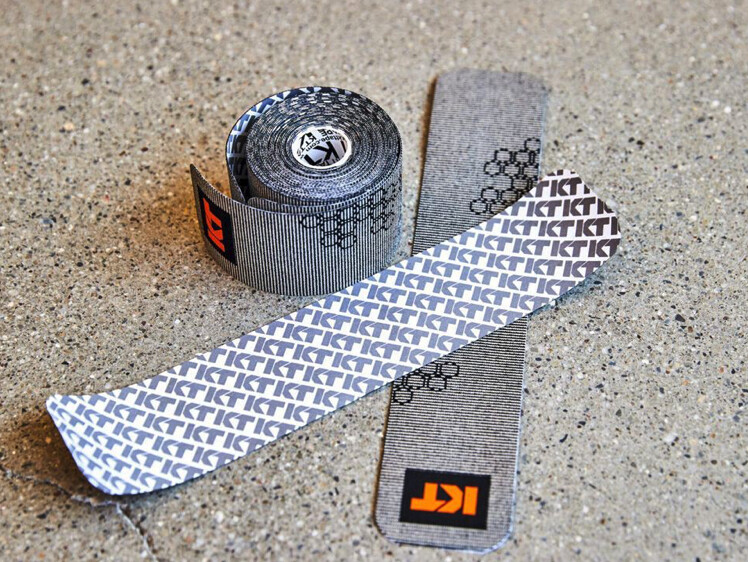
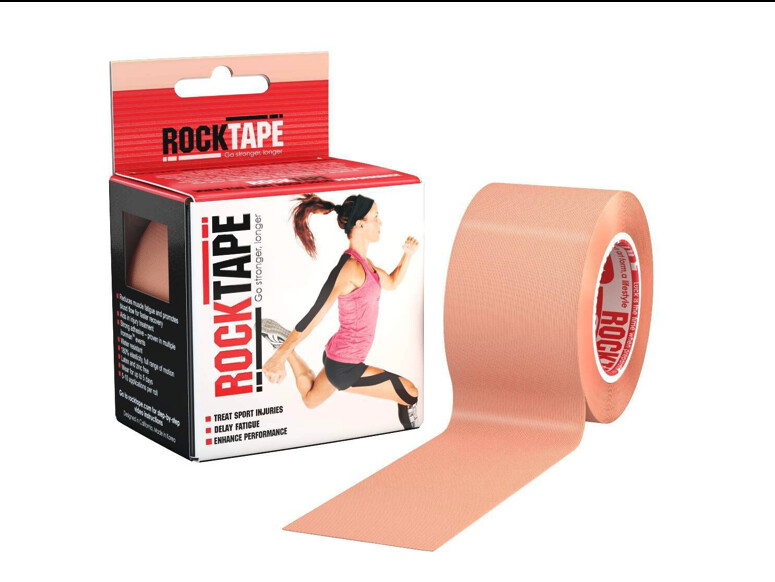
Our experts said that some runners use kinesiology tape to reduce pain. “Once you reduce the perception of pain, you can get an increase in range of motion and an increase in muscle activation,” says Dr. Karena Wu, clinical director of ActiveCare Physical Therapy. Because nerve fibers associated with touch stimulation are larger than pain fibers, the brain receives the touch stimulation faster, reducing your perception of the pain.
The tape can also inhibit certain muscles or facilitate others. Instead of immobilizing muscles and joints like athletic tape, kinesiology tape is stretchy, and runners can use that elasticity to adopt a stronger, healthier stride. “People who have shoulder or trap pain as they’re running tend to hike their shoulders up toward their ears,” says Denise Smith, PT and owner of Smith Physical Therapy + Running Academy. “We’ll tape down their shoulders. As their shoulder creeps up as they fatigue, that triggers a sensation of the tape pulling on the skin, so they relax their shoulders.”
Scientific research confirms some of kinesiology tape’s purported benefits. A 2022 meta-analysis of eight studies conducted by the University of Padova in Italy found that kinesiology tape was able to improve gait function, range of motion, and muscle activation in athletes. However, a 2020 study out of Leeds Beckett University in England found that the tape made no difference in cutaneous blood flow, calling into question some of the tape’s purported benefits for muscle soreness and recovery.
Even without hard science behind all of its claimed benefits, kinesiology tape has been widely adopted by athletes and trainers. At less than $20 per roll on average, it’s a low-cost, low-risk way to at least try to optimize your training regimen.
What to Consider When Picking Out Kinesiology TapeAllergies and Sensitivities
Most kinesiology tapes are made from hypoallergenic materials like cotton and nylon, and specifically avoid using those that commonly trigger allergies, such as latex. Even so, make sure to check the composition of any tape before applying it if you have a skin allergy.
Even if you don’t have a specific, intense allergy, some adhesives may irritate sensitive skin. Several brands offer “gentle” tapes with weaker adhesives that are less likely to cause redness or swelling.
Separately, keep in mind that removing kinesiology tape will likely affect your skin, since the adhesive is very strong. Make sure to read the removal instructions before yanking the tape off—some manufacturers recommend using baby oil to break down the adhesive before removal.
Body Hair
You don’t need to shave your body hair to use kinesiology tape, but you should know that too much body hair will defeat even the stickiest adhesives. If your tape is coming off more quickly than it should on a hairy area, shaving down to a quarter-inch or less may improve the tape’s staying power.
Positioning
Some areas of your body are easier to tape yourself than others, so consider where and how you’ll apply the tape before you buy. Ideally, you should consult a doctor or physical therapist before using kinesiology tape so they can show how to properly cut and apply it in a way that will enhance your performance, instead of harming it. “It is very important to know the anatomy where you are trying to apply the tape,” said Bruce Allen, DC, a chiropractor and certified kinesiology tape practitioner at the San Diego Running Institute. “If taped incorrectly, you could give yourself a separate injury.”
We also have a guide to using kinesiology tape, with expert instructions for taping yourself up to deal with a handful of common running injuries, including plantar fasciitis and shin splints.
If you’re concerned about mis-taping, we recommend looking for pre-cut kinesiology tape strips and patterns, which are made to support specific trouble spots, including knees, shoulders, and the lower back.
How We Selected the Best Kinesiology Tapes
To choose the best kinesiology tape, we consulted eight physical therapists, trainers, and running coaches to find out which ones they use and recommend to their athletes. We also gleaned insight from popular running forums like Slowtwitch, impressions from additional experts, and hundreds of customer reviews at major retailers, such as Amazon and Walmart.Vikash Sharma DPT, OCS, COMT of Perfect Stride Physical Therapy in New York City is a doctor of physical therapy and a certified running coach with the Road Runners Club of America and USA Track and Field. An avid runner, Sharma competes in road races around the Northeast.
Karena Wu, DPT, OCS, COMT, CSCS, CKPT, CPI, FAAOMPT is the owner and clinical director of ActiveCare Physical Therapy in New York and Mumbai. Wu is also the former director of education for Spidertech Kinesiology Tape.
Bruce Allen, DC, CKTP is a doctor of chiropractic medicine and certified kinesiology tape practitioner based in San Diego. Allen received his Bachelor of Science in Kinesiology, specializing in kinesiotherapy, from San Diego State University.
Denise Smith, PT is the owner of Smith Physical Therapy + Running Academy in the Chicago suburbs. A certified running technique specialist, Smith has consulted for the Russian olympic and national triathlon teams and travels the country educating runners on proper form using the Pose Method.
Robyn Pester of Robyn Pester Physical Therapy in Eugene, Oregon has been the lead PT for the 2022 World Athletics Championships, the Olympic Track & Field Trials in 2016 and 2020, and other high-end local track meets. Her manual therapy skills have developed over a 30-year career that has helped hundreds of clients return to active lifestyles.
Ryan Sweeney, DPT earned a doctorate in physical therapy at Duke University in 2013 and now works as an orthopedic clinical specialist and muscle activation technique specialist at Specialists in Sports and Orthopedic Rehabilitation in Overland Park, Kansas.
Matt Silver, DPT at Alpha Project Phyzio and Performance and a certified running gait analyst, helps injured runners regain their stride with athlete-focused physical therapy.
Peter Dills, DPT is the clinical director of Therapeutic Associates Physical Therapy in North Portland, Oregon. A certified therapeutic pain specialist and manual therapy specialist, Dills is particularly passionate about treating runners, especially foot and ankle disorders.
Dan Roe, author of this piece, is a former Runner’s World test manager and a former Division I distance runner at the University of Missouri. Kinesiology tape is a component of many top athletes’ training regimens, and a crucial aid for all kinds of runners who want to relieve soreness and remain cognizant of their form. Kinesiology tape mimics the elasticity of skin and lifts your skin away from tissues beneath, creating space that may help relieve joint pain, improve circulation, stabilize muscles, and reduce muscle soreness. Physical therapists also use it to help runners correct bad habits by helping them focus on activating muscles they may be underutilizing.
At the same time, it’s not a panacea for muscular health. In fact, it isn’t for everyone. We’re here to help you figure out whether kinesiology tape can help you support your muscles, improve circulation or prevent injury. We’ll also point you toward the best kinesiology tapes you can buy right now, from KT and other brands, based on expert advice from physical therapists who recommend the tape to their athletes.Who should avoid using kinesiology tape?
You should avoid kinesiology tape if you have a condition where more blood flow would be bad—deep vein thrombosis, diabetes and active cancers are among conditions that have excluded people from participating in kinesiology tape research. Also avoid taping over open wounds due to the risk of an infection.
If you’re unsure how your skin will react to an acrylic-based adhesive, or any of the components in a specific tape, test it first by applying an inch-long strip and waiting a few minutes to see how you react.
How long should I leave kinesiology tape on?
According to our experts, you should leave your KT tape on until it starts to slide or fall off. “The tape is meant to be a sensory stimuli so it is meant to be worn for the length of the activity and even afterwards,” said Wu. “In rehabilitation, it should be used for a few weeks in order to retrain or support or inhibit tissues during the recovery process.”
In most cases, a piece of tape should last for a few days, up to a week. Most of these tapes are water-resistant so you will be able to shower after a run while wearing your tape, but it will likely weaken the adhesive.
How do I prepare my skin before applying KT tape?
Our experts recommend applying rubbing alcohol to the area to remove natural oils before taping up. Make sure the skin is not red or irritated before putting it on, especially if you are reapplying to a recently taped area. “You never want to take the top layer of skin off or irritate the skin or else you cannot re-tape until the skin has calmed down,” Wu said.
How do I remove KT tape?
Dills advises his clients to remove the tape in the shower using warm, soapy water. To avoid leaving a residue, “don’t pull the tape straight away from your skin,” Dills said. “Gently peel it back a little at a time.” If your tape does leave some adhesive behind, Smith recommends starting with soapy water and a sponge or scrub brush, and graduating to an adhesive remover pad for persistent adhesives.
by DAN ROE Runners World
Login to leave a comment
How to Make a Homemade Gel Ice Pack
Plus, what to keep in mind as you ice that sore muscleRest, recover, and ice, ice, ice. If you’ve been injured, you’re likely familiar with this phrase. And like your plan to heal, icing is individual to you. While other members of your training group may prefer a bag of ice or frozen peas, you may gravitate toward the feel of a gel ice pack.
Instead of shelling out money on Amazon, you can make your own gel ice pack at home. However, icing an injury or ache is a bit more complicated than slapping a bag on your leg. Here’s what to keep in mind.

Icing is individual to you—and is something that should be discussed with and cleared by a medical professional, says Jen Caudle, DO, associate professor of family medicine at Rowan University in New Jersey. For example, if you have poor blood flow to certain areas of your body or nerve damage, there are certain risks. Depending on your injury and preference, there will be a particular cooling source that works best for you, Caudle says, whether a gel ice pack or a bag of frozen peas.
You’ll also want to find something to wrap around the pack. “It’s important to cover up ice packs with a towel,” Caudle says. “That sort of removes the extreme cold, which can actually damage skin and tissues.”
Timing is also critical. Leaving an ice pack on for more than the sanctioned amount of time can potentially create more problems than solutions, Caudle says. She recommends, for most people, to leave an ice pack on for no longer than 15 to 20 minutes.
Here, Caudle breaks down how to construct your own gel ice—using just four different items you likely already have lying around the house.
What you need: Rubbing alcohol (with a concentration of at least 70 percent isopropyl alcohol), water, a measuring cup, a resealable plastic bag
1. Pour ⅓ cup of rubbing alcohol and ⅔ cup of water into a plastic bag. If you want to create a larger ice pack, double or triple the amounts. The ratio should always remain two parts water to every one part rubbing alcohol.2. Squeeze out any air, seal the bag tightly, and mix the rubbing alcohol and water.3. Place your bag in the freezer for a few hours. It should feel like a gel substance when you remove it.4. Use your gel ice pack on sore muscles and joints. Return it to the freezer after you’ve finished icing.
by Outside Online
Login to leave a comment
Top Four Endurance Races for Amateurs in the World
Participating in the top leagues and renowned racing events might require professional training. Experience is also an added advantage as it gives contestants an edge in the competitions. Such requirements can frustrate amateurs from participating in races due to the fear of being outshined by the experts.
Fortunately, there are various races around the world that are suitable for amateurs. These amateur races allow inexperienced sportspersons to rate and build their skills. In this article, we explore the best four endurance races for amateurs.
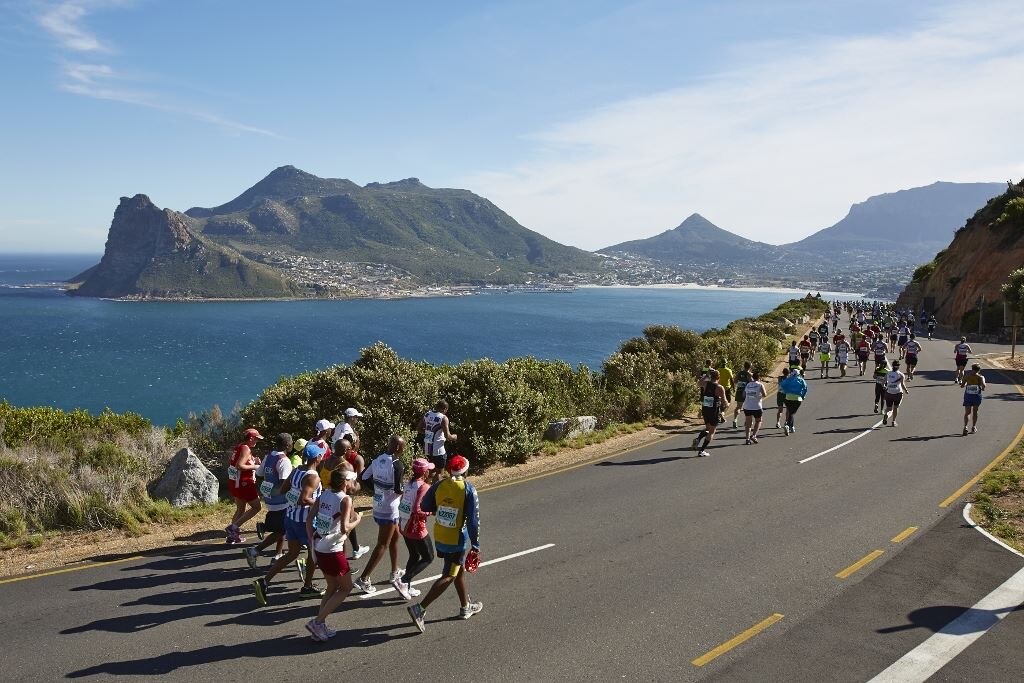
Amazon River International Raft Race
This race is hosted every September in Peru, in a city that is only accessible by water or air. The Amazon River International Raft Race isn’t known widely due to its non-operational Facebook page and poor-quality website. Because of this, it doesn’t appeal to professional paddlers. Despite its downsides, this race offers the perfect gruesome challenges for amateur contestants.
The race comprises teams of four participants that build balsa wood rafts and use them to paddle 180 kilometers down the Amazon River from Nauta Town to Peru City. The Amazon River International Raft Race has been recognized as the longest raft race in the Guinness Book of World Records. Participants are advised to carry mosquito repellants, A535s, and some sunscreen. If you join this race, expect to compete with more than 30 inexperienced contestants.
The Canadian Mini Indy
This race is more enjoyable and also challenging for contestants. The Canadian Mini Indy hosts over 100 amateurs and professionals. The contestants have to be aged between 8 to 65 years to participate. It is an arrive-and-drive rookie race, where contestants are provided with a go-kart that can reach a top speed of 80 km/hr. This 6-hour race poses a gruesome challenge where speed won’t guarantee success. Racers need patience, consistency, and strategy to finish it.
The thrill in this amateur race can also be enhanced by online wagering. Nothing beats the joy of predicting the success of your favorite contestant and getting it right. If you are in Alberta, with the guidance of reliable web sources, you can safely place your alberta bets OR alberta sports betting predictions on a trusted wagering platform. Through these top-rated platforms, you can also bet on all other popular sports.
Wulong Mountain Quest
This race always takes place in the beautiful Wulong County in Southern China. It is a prominent amateur adventure race that provides several obstacles for the participants. This entire race has 3 phases which last for 3 days. It also has around 20 to 25 participating teams, each with around 4 contestants. The first day is fast-paced as contestants will be engaged in much cycling, paddling, and running.
Navigation in this race is easier due to the properly marked roads. The scenery, including the limestone formations and a UNESCO World Heritage Site, also gives racers and spectators a great outdoor experience. The closing and opening ceremonies are unique and exciting, especially for visitors.
Two Oceans Marathon
This 45-year-old race provides a 56 km challenge for contestants in Cape Town, South Africa. Two Oceans Marathon is a globally reputable ultra-running race. It has the most appealing scenery because the competitors will be running on gorgeous roads, including Chapman’s Drive. Besides the massive elevation gain and loss, the heavy winds pose an enormous obstacle for the runners.

Since the Two Oceans Marathon is known worldwide, it typically attracts over 100,000 contestants. This race provides a perfect ground for amateurs to perfect their skills. (See photos)
Conclusion
You don’t have to get to the professional level before participating in races. There are many renowned races for amateurs. However, some allow both professionals and amateurs to compete in the same quest. Such races offer an opportunity for inexperienced contestants to match up their skills with professionals and learn from them. Participating in such races is a great way to develop your racing skills.
Login to leave a comment
Five Lessons from the Marathon Goat and his team
THE MOST REMARKABLE aspect of the fastest marathoner in history is how unremarkable—and how accessible—his training is. Eliud Kipchoge has the best resources in the world at his disposal, but rather than relying on treadmills that cost more than a Lexus or recovery devices worthy of NASA missions, he follows simple training tenets that maximize how he recovers, what he eats, his mindset, and the conditioning he does after his runs.
1. SLEEP LIKE YOUR RUN DEPENDS ON IT
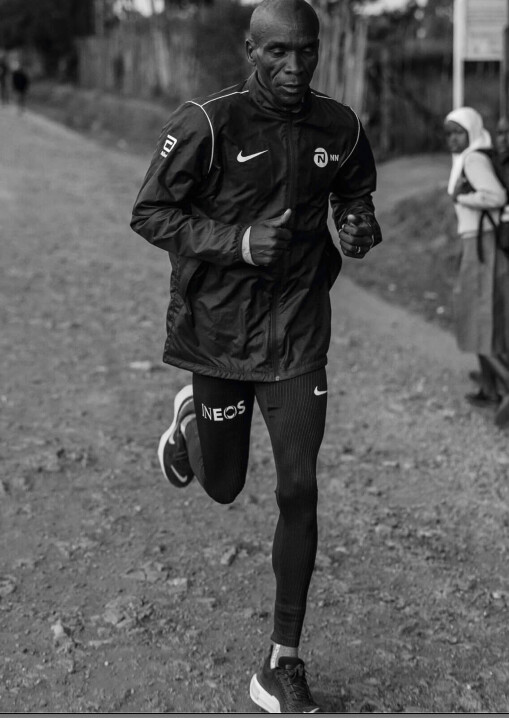
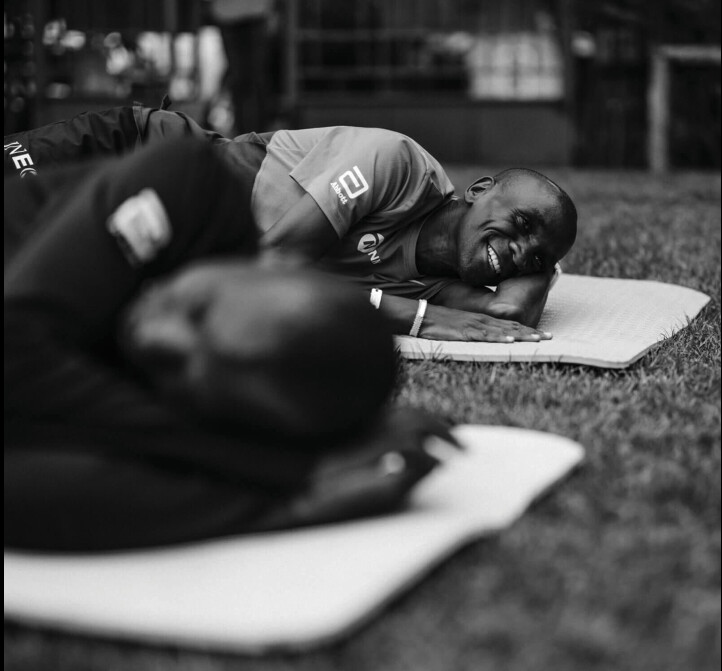
ELIUD KIPCHOGE SLEEPS up to 9 hours at night, often also taking an hour-long midday nap. Most of us don’t have the time or the 120-mile weekly workload to clock that much shut-eye, but we can still benefit from Kipchoge’s sleep hygiene cues.
At least 30 minutes before bed, he turns off or puts down all electronics. The habit reduces his exposure to blue light, known to delay the release of melatonin, leading to a decrease in sleepiness, says Kannan Ramar, MD, past president of the American Academy of Sleep Medicine. Then, instead of scrolling through social media (he prefers Facebook), Kipchoge winds down by reading at least two chapters of a book.
“If I have enough sleep, my body and my mind are free of stress and ready to go with the programs,” says Kipchoge.
While you’re asleep, your body is doing more than resting. Crucially, your pituitary gland releases growth hormone, which helps your muscles repair and grow, says Ramar.
Most runners don’t need a nap if they consistently get the recommended 7 to 9 hours, Ramar says. But when you don’t hit that target, naps can help counter short-term sleep loss and provide an energy boost for a late-day run, Ramar adds. He suggests a 20-minute doze between noon and 3 p.m. to relieve fatigue. Napping longer than 20 minutes can leave you feeling groggy due to entering a deep-sleep state, Ramar says.
2. REVIVE SORE MUSCLES WITH AN ICE BATH
TWICE A WEEK, Kipchoge takes a 10-minute plunge in his camp’s ice baths to aid his postrun recovery. It may not be pleasant, but studies find that cold water immersion (CWI) therapy like Kipchoge’s ice bath is effective. “Most research shows that over 48 hours, athletes have reported an improvement in DOMS [delayed onset muscle soreness] and sometimes corresponding improvements in strength and/or flexibility,” says Rebecca Stearns, PhD, a professor of kinesiology at the University of Connecticut.
Cold water reduces the body’s temperature, which narrows the blood vessels. This flushes metabolic waste from inflammation out of muscles to speed recovery, says Stearns. Water temperature between 50 and 59 degrees Fahrenheit for 10 to 15 minutes is cold enough to produce results, she adds.
You can set up an ice bath at home by filling a tub halfway with cold water. Then, depending on your tap temperature, add one to three 5-pound bags of ice. Stearns suggests trying CWI once or twice a week and checking with your physician to make sure you don’t have any contraindications for doing ice baths.
“It’s very intense. It’s not for everybody,” Kipchoge says. “You need to learn to relax and learn to absorb pain.”
3. UPGRADE YOUR DIET WITH PROTEIN
KIPCHOGE HAS ALWAYS maintained a highcarb diet, but after running 2:00:25 in Nike’s 2017 Breaking2 project, he began working with exercise biochemist Armand Bettonviel to improve his nutrition and further push his performance. Bettonviel, who develops nutrition plans for elite athletes, sought to up Kipchoge’s protein intake to aid his recovery as well as help to build and maintain his lean muscle.
“I’ve noticed a difference since I started to be serious about nutrition,” Kipchoge says. “Recovery is very fast, I have a lot of energy.”
While Kipchoge’s exact protein intake is confidential, Bettonviel suggests runners aim for 1.5 to 2 grams of protein per kilogram of bodyweight. For a 150-pound runner, that’s 102 to 136 grams.
Kipchoge’s meals feature Kenyan staples like ugali (a cornmeal porridge), potatoes, rice, chapati (a wheat flatbread), managu (an iron-rich leafy green), beans, whole-fat milk, eggs, chicken, and beef. Meat is only served about half the week, so to hit his protein goal Kipchoge drinks mala, a local sour milk, says Bettonviel. Every 6 ounces has about 7 grams of protein, making it comparable to kefir found in most stateside dairy aisles.
Bettonviel also introduced a high-protein porridge to the camp menu (Kipchoge eats it with fruit after training) made with whey protein and teff, an ancient grain that offers 10 grams of protein per cooked cup. You can DIY by mixing a half scoop of protein powder with whole-grain teff—stocked at many grocery stores and sold on Amazon—and cook it similarly to oatmeal. Alternatively, Kodiak Cakes makes oatmeal with whey protein and 12 grams of protein per serving.
4. MEDITATE TO BUILD MENTAL STRENGTH
KIPCHOGE IS AN especially mindful runner, says his coach Patrick Sang. While training and racing, he focuses on his breath and his movements, and aims to minimize outside distractions. It’s a skill that helps him embrace the pain and challenges of a marathon.
Mindfulness—a practice of focusing your awareness on the moment, with a kind and curious attention in a nonjudgmental attitude—can benefit any runner, says Corrie Falcon, director of mindfulness-based training for athletes at the University of San Diego Center for Mindfulness. Resting your attention on elements of a present moment, like your breath, heartbeat, or even a drip of sweat, can prevent you from getting caught in an inner dialogue mid-training or competition that may unravel your focus.
“In moments of high stress before or during a race, mindfulness has been shown to reduce the production of stress hormones, reduce blood pressure and heart rate, improve emotional regulation, and promote relaxation in the body,” says Tara Zinnamon, PhD, a neuroscientist and meditation teacher.
Kipchoge credits his focused, spartan lifestyle for developing mindfulness, but it can also be cultivated through a consistent mindfulness routine. Even just 12 minutes of guided meditation five days a week for one month can be effective, says Amishi Jha, PhD, a professor of psychology at the University of Miami.
If guided meditation seems outside your comfort zone, Falcon recommends a strategy you can try while running. She describes it as a “sense practice.” Run in silence. For two minutes, focus on what you see, then focus on sound, followed by what sensations you feel, and then smell. “And when you have a thought, label it ‘thought’ or ‘thinking’ and return to the present moment experience through the senses,” says Falcon.
5. BUILD BONUS ENDURANCE ON A BIKE
TO BOOST HIS training volume without increasing his risk of a running injury, Kipchoge rides a stationary bike for an hour twice a week after his runs.
Cycling is a concentric (shortening) muscle-contraction activity, which is easier for muscles to recover from, says Colorado-based coach Bobby McGee, who has worked with runners and triathletes (including Olympic gold medalist Gwen Jorgensen) for more than three decades. In running, the primary loading is eccentric (lengthening), which is more demanding and damaging.
“A one-hour endurance run is limited by leg fatigue, not heart and lung fatigue. A two-hour ride doubles the cardio conditioning but has minimal leg-muscle damage,” says McGee.
Kipchoge spins at an easy pace, which he says also helps reduce muscle soreness. “Cycling is a far more effective recovery modality than an easy run, especially for bigger runners with a slower cadence,” says McGee. He recommends cycling no more than twice weekly and for less than 20 percent of your overall training time.
Login to leave a comment
How I Won the World Cross-Country Championship at Age 83
Seventy years after his first cross-country race and 46 years after competing as an elite runner, the author competes—and triumphs—on a tough Australian course
Last weekend, in Bathurst, Australia, I did something I thought I would never do again: I ran once more in the World Cross-Country Championship. Not the main men’s open race, in which I competed for England in 1966 and New Zealand in 1977. Not at age 83. But for the first time, the World Athletics federation added Masters championships, and—almost like a dream—I not only participated again, but raced at the front of the M80 field and managed to outlast a stubborn Australian for the win.
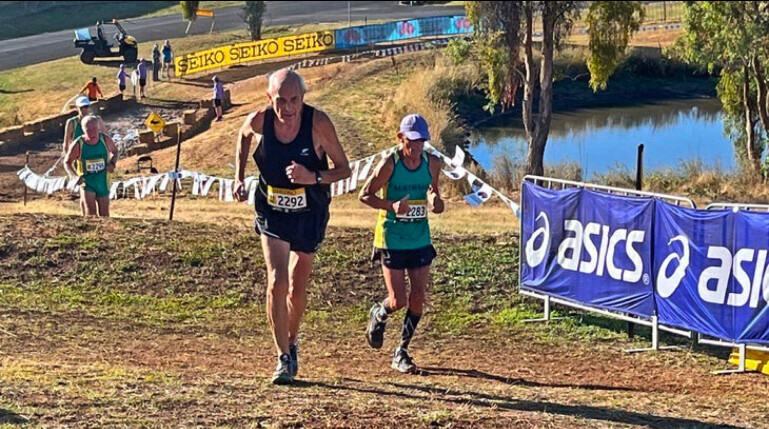
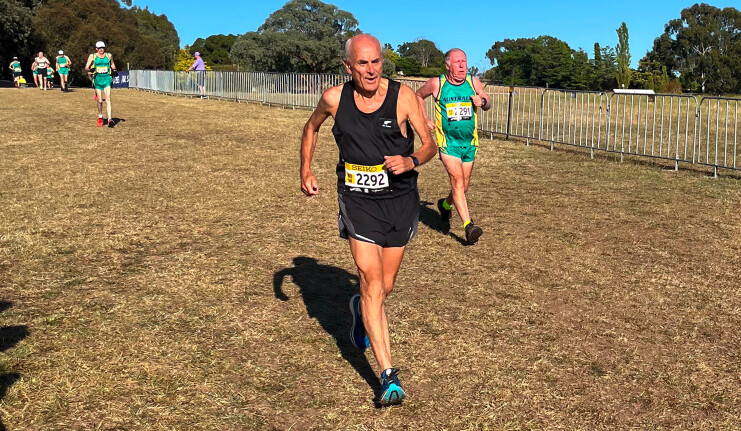
If you believe that running after eighty is about leisurely slow toddling, wait till you’re up there, racing to your limit, and you make the sharp u-turn at halfway and see that you are being closely stalked by a lean lanky Aussie with M80 on his bib and a threatening scowl like Mel Gibson in Lethal Weapon.
He is called James Harrison, and he made me work for it. I have won and lost many hard races over the years, and this was one of the hardest. The only possible tactic was unrelieved pressure. I finally broke him three-quarters through the four-kilometer distance, on the second two-kilometer lap, as we gasped up a big steep rough-surfaced hill that broke many hearts that weekend. At last, I sensed him drop. It took tenacity, months of focused training (including hill repeats), and years of learning the wiles that true cross-country demands.
This was a course where every decision counted about where you placed your next stride. Every sharp oxygen-draining uphill demanded that you keep momentum over the crest, every downhill was there for attack, not recovery, every tight turn required poise and pace. Those things don’t come easily after age eighty (and on two replaced knees in my case), but it was a World Championship of cross-country running, and we were there to take those tests.
I won’t claim the sheer thrill of winning the race was the same as ever. But it was real, and it had a private significance. I ran below my best in the senior world championship in the past. Nothing can change those results, but it felt good this time to get it right. And the sense of achievement is something that few things in the last years of life are ever likely to equal.
World Athletics, under President Seb Coe (who learned cross-country in England in his early teens), has grown tired of holding its cross-country championships on boring flat safe horse-race circuits, like those I encountered in my days in the main race. They decided to take some security risks to revitalize the sport. American senior administrator David Katz now acts as course consultant for each World Cross-Country, and insists on the real thing.
“Cross-country has one distinctive thing, the course. That has to be the talking point, and each one must be unique as the race moves around the world. The media and the public need to understand that cross-country is special in its challenges, not just another long race,” Katz said in Bathurst.
The previous championships in 2019 in Aarhus, Denmark, set the world chattering about a course that included loops over the steeply-sloping grassed roof of the Moesgaard Museum. This time (after several Covid-related postponements) the Aussies gave us a course that was a raw slice of the Australian outback. On the side of Mount Panorama, it was broken and unpredictable, rusty dirt, grey raggedy scrub grass, and diabolical hills. Scattered blue gum trees provided the only shade. Each morning, you could find fresh kangaroo poop.
They added some challenges to make it even more uniquely Australian. There was a “billabong,” of treacherous ankle-deep wet mud that caused many runners to skid and flop to a slimy downfall. (Some of the slower kids in the scholastic races lay down and daubed themselves heroically.) There was a dash through the straight vines of a winery, followed by tight turns, and, in honor of Bathurst’s motor-race circuit, a “chicane” where you had to steer through a forest of car tires.
High on a dry hillside there was a stretch named “Bondi Beach,” deep shifting sand decorated with lifeguard flags and “Beware of Sharks” signs. An Aussie joke, yet for the runners, another testing change of racing rhythm, another response to the challenge of contours and terrain. No other kind of running does that. Cross-country is the closest our sport gets to true interaction with the earth.
Added to all that was the Outback summer heat, 95 degrees for the main races on the Saturday late afternoon. In the different races, several runners were taken to hospital, and at least four passed out during the race, including, it seemed, the women’s favorite and race leader, Letesenbet Gidey (Ethiopia), who collapsed dramatically and glazy-eyed as she was passed by Beatrice Chebet (Kenya) within strides of the finish.
As a serious evening storm approached, its clouds like dark riders, the men’s race was hastily moved forward, and 22-year-old Ugandan Jacob Kiplimo had to win his first major title while lightning flashed behind the mountain and brutal wind gusts sent runners staggering. Slower runners were caught in torrential rain. Australia does nothing by half measures.
For me and many others, Australia was an unexpected opportunity. Three months before the race, World Athletics and World Masters Athletics announced that they were combining to add masters championships, part of a new and excellent policy to make the event a full cross-country festival, as well as the world’s elite team and individual championships. Hundreds of spectators doubled as competitors. I met so many old friends out there, it was like a global runners’ reunion.
In addition to the usual competitors from Europe, North America and Africa, there were teams from Fiji, Papua New Guinea, Tonga, and other Pacific nations, none of them obvious participants in a sport that is essentially one of cold winter.
I guess an 83-year-old who last ran the World Cross-Country in 1977 was another less-than-obvious participant. I never imagined it. I gave up cross-country for good, I believed, when my orthopedic surgeon confessed, after he watched me and the knee he had implanted struggle over a muddy course, that it gave him nightmares for weeks.
But a lifetime of racing has taught me that you have to seize the moment. Before committing, I watched videos of the course, which like a good actor came across looking much more attractive than it was. When I actually saw the steep downhills, I thought I was out of my mind. But another thing I have learned is that in running, only one thing is absolutely certain—you won’t run well if you’re not in the race.
I registered. I did the work. I seized my moment. I got the sheer thrill of winning a race. I was lucky in that the course’s surface proved (mostly) not too lumpy or too soft, and I was lucky in some top Europeans and South Americans not making the journey. In every race, you can only compete against those who show up.
Young readers, please note. In January 1953, aged 13, I ran my first cross-country race, in my high school’s inter-house league, well back in the field. Seventy years a runner. You never know what a high school race might lead to.
Being called world champion at 83 is a nice way to celebrate that small private anniversary—and at this age, I can surely be forgiven a memory lapse, if sometimes I forget to add “over-80.” It could also be a nice way to round off seventy years of running. Round off, except for the next race, that is.
(Roger Robinson ran the world cross-country championship for England and later New Zealand, and set a Masters record of 2:20:15 at the Boston Marathon. He is regarded as the outstanding historical writer on running. He recaptures history from personal observation in When Running Made History (Syracuse University Press) and he researches vivid and accurate accounts of the sport’s best stories in his new book, Running Throughout Time: the Greatest Running Stories Ever Told (Meyer & Meyer). Available through Amazon and all online outlets and bookstores.)
by Outside (Roger Robinson)
Login to leave a comment
New study suggests running helps your gaming
Have you ever wondered why your gaming keeps getting in the way of your running? Could it be because running makes you good at it? Asics, the Japanese sporting brand, invited 77 competitive gamers from around the world who specialize in games that rely on their cognitive function, such as chess, poker and e-sports, to begin a physical training program–and they found some surprising results.
The study was carried out over a four-month period, as of the 77 study subjects followed a training program designed by international runner-turned-coach Andrew Kastor (husband of Olympic medallist Deena Kastor), which included 150 minutes per week of medium-impact strength and run-based training.
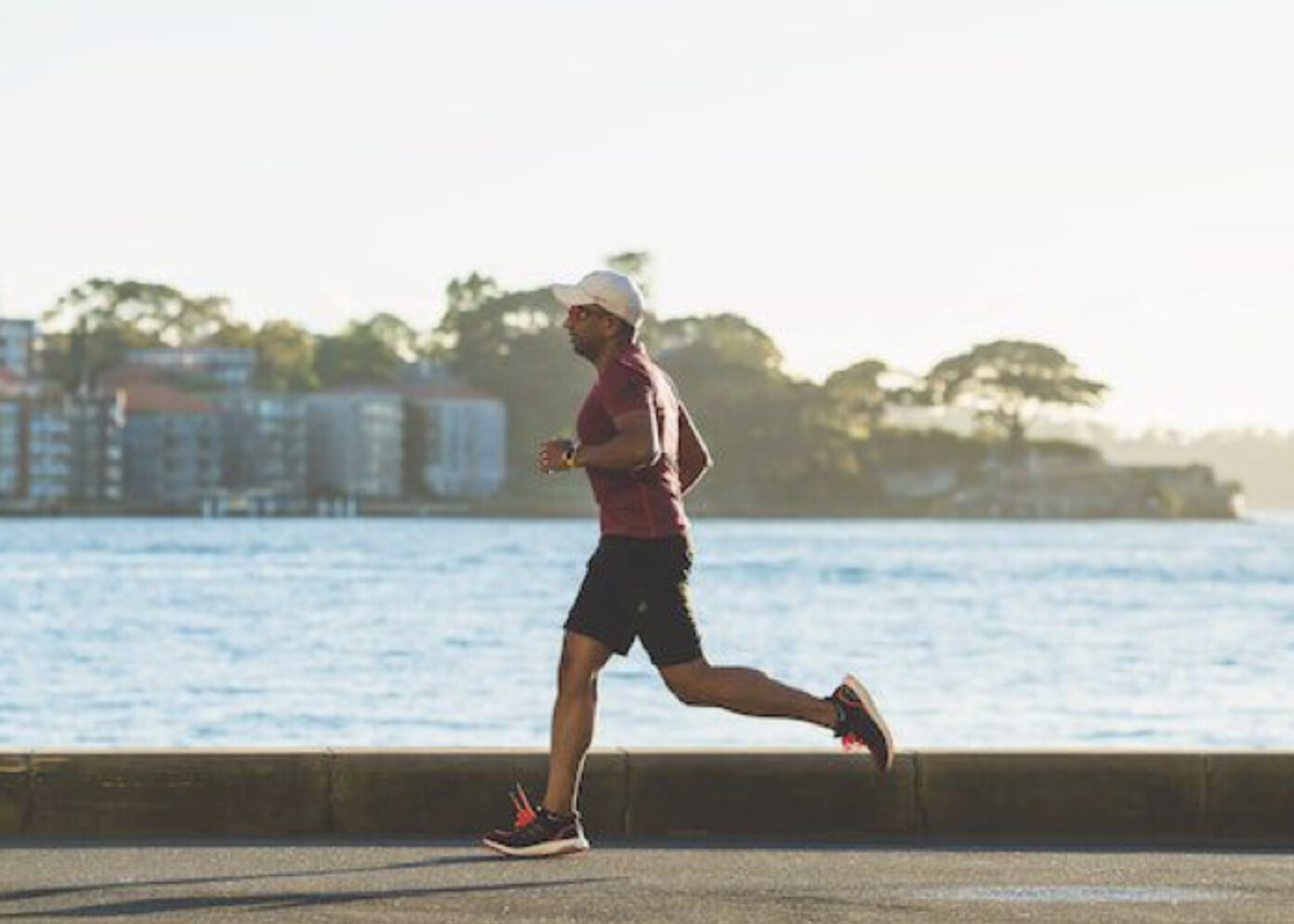
Renowned mind and movement researcher Brendon Stubbs of King’s College in London led the experiment, measuring the mental improvement of participants based on their performance on brain games, cognitive tests and well-being questionnaires over the course of the study.
Stubbs found that after found months, the previously inactive gamers increased their cognitive function, well-being and gaming performance. “The results show significant improvements in their cognitive functioning, including concentration levels and problem-solving abilities,” Stubbs reported.
Participants’ international gaming ratings improved by 75 per cent
Mental gamers’ cognitive function was boosted by an average of 10 per cent, with problem-solving skills improved by nine per cent, short-term memory increased by 12 per cent, and processing speed and alertness improved by 10 per cent.
Confidence levels increased by 44 per cent.
Focus improved 33 per cent and anxiety levels plummeted by 43 per cent
Players’ mental well-being was significantly better, with average mental state scores improving by 31 per cent
We all know that running is good for our mental and physical health, but the impact on acquiring information has been less well explored. The goal of the study was to examine the effects running has on people who depend on their cognitive abilities (like competitive gamers).
“Running stimulates cell growth in the brain and rapidly increases blood flow to the hippocampus and prefrontal cortex, mechanisms that enable us to better retain memories, process information, and problem solve quickly,” said Stubbs. “If running can significantly increase the mental performance of professional mind gamers, imagine what it could do for the rest of us.”
Inspired by the experiment, a camera crew followed four of the 77 competitive gamers as they exercised regularly to improve their (gaming) rankings.
The documentary, called Mind Games: The Experiment, documents the journeys of four gamers who specialize in chess, mahjong, poker and e-sports while competing in professional tournaments around the world. The documentary is currently available on Amazon Prime Video.
by Running magazine
Login to leave a comment
Banned Ujah blames Amazon supplement for positive drugs test
Banned British sprinter CJ Ujah says a “convenient” £10 supplement bought from Amazon caused him to test positive for two prohibited substances at the Tokyo Olympics.
Ujah has been handed a backdated 22-month ban but cleared of intentionally taking prohibited drugs by the Athletics Integrity Unit (AIU) and World Anti-Doping Agency (Wada). Britain was stripped of its Olympic men’s 4x100m silver medal after he tested positive for Ostarine and S-23 at the 2021 Games.
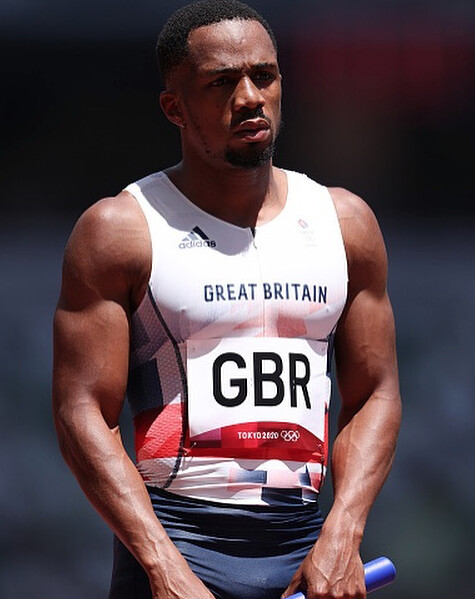
Speaking to the Guardian, 28-year-old Ujah said he had become “complacent” during the Covid-19 lockdowns.
“During the pandemic I relied a lot on Amazon, rather than using the people and resources around me,” he said. “It was just convenient, with next-day delivery. And I didn’t think anything was wrong with it.”
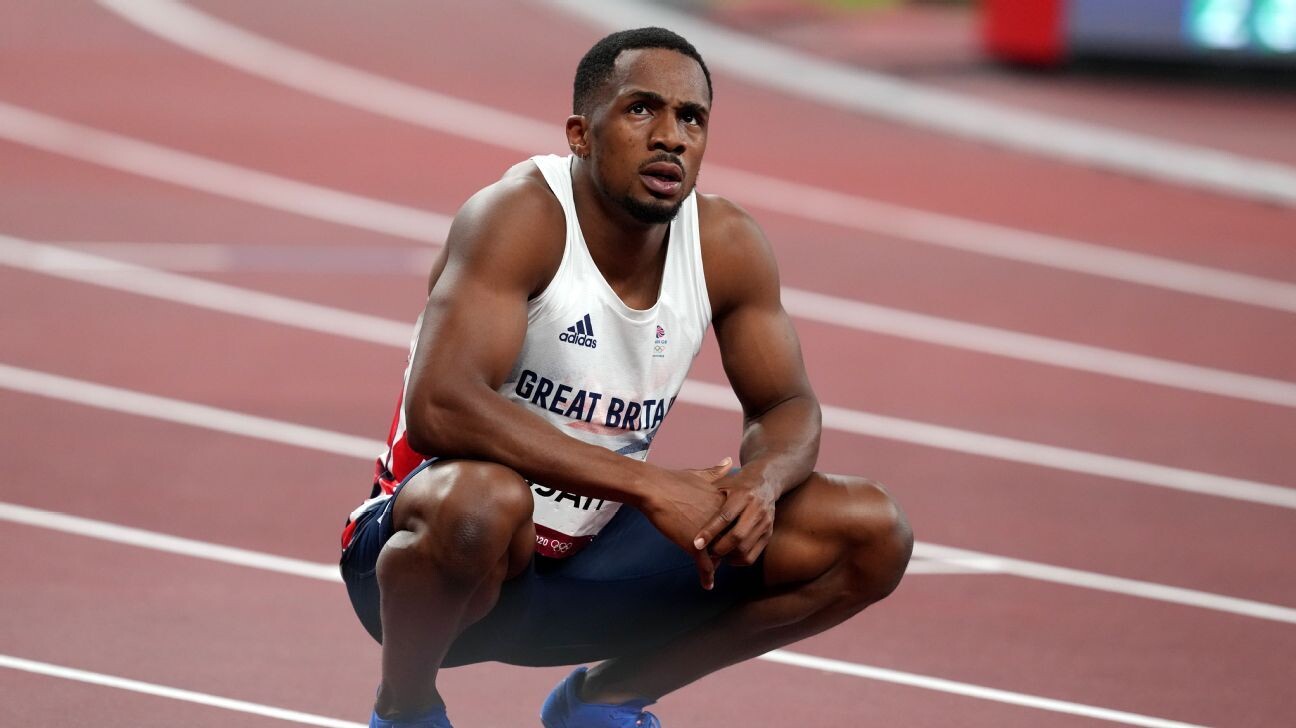
Ujah said he had been taking the supplement beta alanine for “weeks” before the Olympics, but did not know they were contaminated with trace amounts of Ostarine and S-23. He said his final drugs test before the Olympics was May 2021.
Beta alanine, a naturally occurring amino acid, is legal under Wada rules, but Ostarine and S-23 are selective androgen receptor modulators (Sarms) and the UK Anti-Doping website states Ostarine is a drug designed to have similar effects to testosterone.
“You know what? I wish I had been tested right before the Olympics, so that I never went,” he said. “That way, I would never have put these other three guys, my team-mates, through what they went through as well as myself.”
Ujah apologised to his 4x100m relay team-mates Zharnel Hughes, Richard Kilty and Nethaneel Mitchell-Blake, after Britain was stripped of a medal at a summer or winter Games for only the third time.
His ban is backdated to August 6, 2021 and will end on June 5, 2023, which would permit him to compete at August’s World Championships in Budapest if selected. UK Athletics (UKA) expressed its “extreme disappointment, frustration and sadness” towards the actions of Ujah.
The athlete has said he no longer takes supplements as he bids to “prove himself more than ever”.
“I don’t take anything,” he said. “In the future, I’m going to look to get everything from natural foods. Because I’m scared. I was even scared at one point to take paracetamol. You just become frightened of putting anything in your body.”
AIU head Brett Clothier said: “Taking supplements is risky for athletes as they can be contaminated or even adulterated with prohibited substances. Athletes owe it to their fellow competitors to be 100 per cent certain before putting anything into their body. If there’s the slightest doubt, leave it out.”
by BBC Sport
Login to leave a comment
Tokyo 2020 Olympic Games
Fifty-six years after having organized the Olympic Games, the Japanese capital will be hosting a Summer edition for the second time, originally scheduled from July 24 to August 9, 2020, the games were postponed due to coronavirus outbreak, the postponed Tokyo Olympics will be held from July 23 to August 8 in 2021, according to the International Olympic Committee decision. ...
more...Everything you need to know for the 85th Manchester Road Race
The 85th Manchester Road Race (MRR) is almost here and runners from all over the country are lacing up their running shoes.
The race was forced to be held virtually in 2020 due to the COVID-19 pandemic. But with vaccinations, and efforts made by the state and race officials, the race will happen in person for the 2021 race.
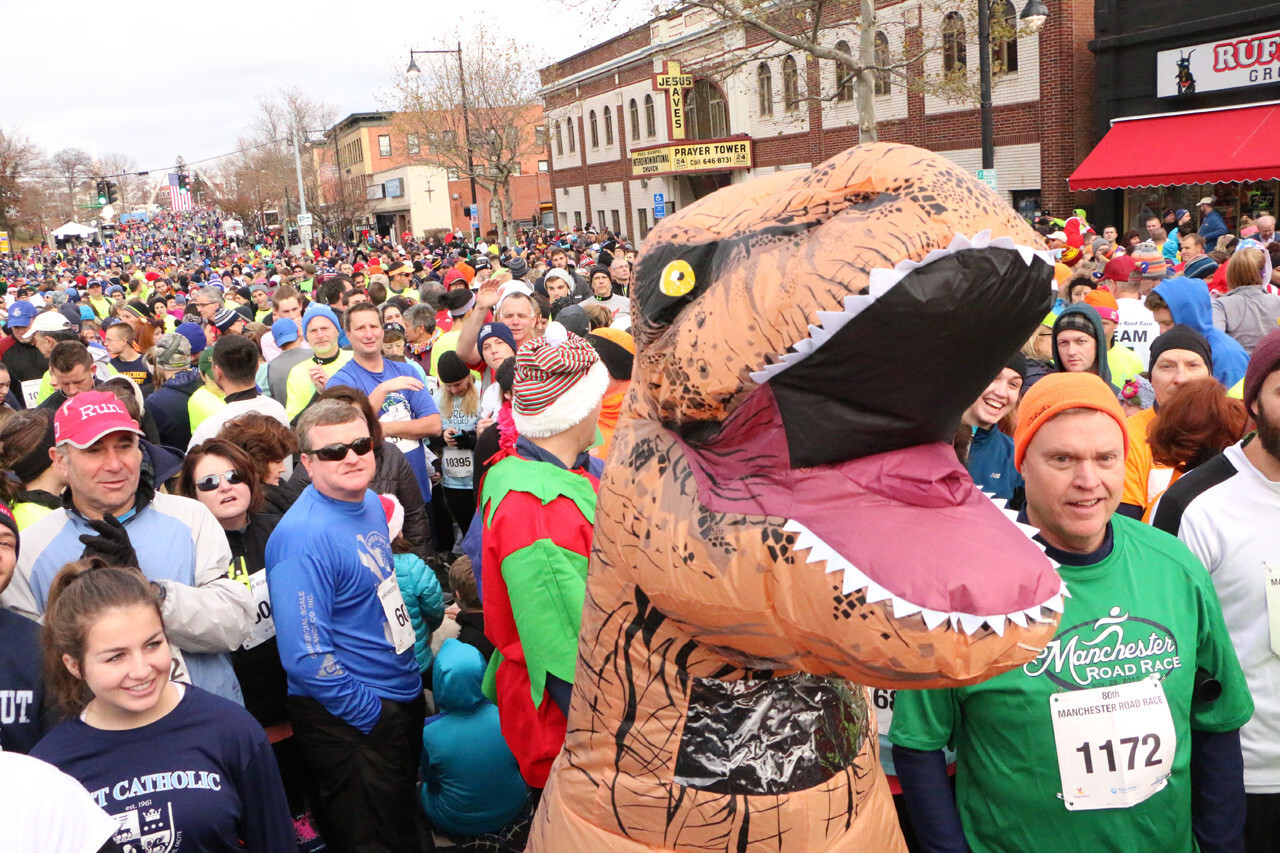
Here's what you need to know:
How to Watch
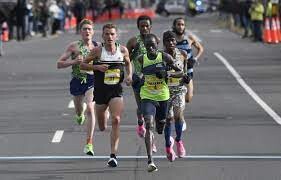
The race will be held on Thanksgiving Day.
FOX61 and CW20 will broadcast the race entirely. Fans who cannot make it out to Manchester on the day can watch it live on TV or stream it on FOX61.com, FOX61 News App, ROKU and Amazon Fire TV apps and on the FOX61 Youtube page from 9 a.m. to 11 a.m.
The race will be rebroadcast in its entirety on CW20 starting at 4 p.m.
The race will start at 10 a.m. sharp. It will begin and end on Main Street at Oak Street. From there, runners will head onto Charter Oak Street where they will hit the first mile.
At the second mile, runners will head onto Highland Street before turning onto Porter Street where they will hit the third and fourth mile.
The length of the course is 4.748 miles.
COVID-19 Safety Measures
With COVID-19 still impacting the community, race officials have implemented safety measures.
Officials strongly urged everyone participating to be fully vaccinated before race day, which includes athletes, volunteers, and fans.
Additionally, officials mandated that all of the elite runners, many of whom are coming from out of state, provide proof of vaccination.
Masks must be worn at all of the MRR indoor events and on shuttle buses transporting runners and spectators to the race.
The MRR canceled its indoor Spaghetti Supper and Charlie Robbins Luncheon this year due to the mask requirement.
While masks are not required outdoors, race officials are asking runners, volunteers, and spectators to still wear masks and follow social distance protocols as much as possible at the race and all the associated events.
Elite Runners
Sam Chelanga, winner of the 2013 MRR, and Edna Kiplagat, who won the women's title at the 2019 race, will return this year.
Other world-class male athletes who have entered this year’s 4.748-mile Turkey Trot include Ben Flanagan, who won the Falmouth Road Race in August and finished eighth at the 2019 MRR; Drew Hunter, the 2019 USA indoor two-mile champion who won the national 5K road championship in New York City on Nov. 6; and Olympian Donn Cabral, who was second at the 2015 MRR and has had seven top-10 finishes in Manchester.
Cabral, a graduate of Glastonbury High School who was the NCAA champion in the steeplechase when he competed for Princeton, was the fastest runner (23:00) in last November’s Virtual Manchester Road Race.
Weini Kelati, who won the women’s national 5K road championship in New York City on Nov 6th with a time of 15:18, and Monicah Ngige, the fourth-place finisher at this year’s Boston Marathon who had a fourth-place finish here in 2018 (25:02), are also expected to make strong showings in the women’s race.
by Jennifer Glatz
Login to leave a comment
Manchester Road Race
The Manchester Road race is one of New England’s oldest and most popular road races. The 86th Manchester Road Race will be held on Thanksgiving Day. It starts and finishes on Main Street, in front of St. James Church. The Connecticut Sports Writers’ Alliance recently honored the Manchester Road Race. The CSWA, which is comprised of sports journalists and broadcasters...
more...Canio Polosa breaks Canadian M90+ 5K record
Canio Polosa, a 93-year-old runner living in London, Ont., smashed his own 5K Canadian Masters record on Sunday by over one minute. Polosa ran 36:30 at the Halloween Haunting 5K, which was held at Springbank Park in London, Ont.
His previous personal best was 37:41. Polosa mentioned that he was honored to have so much support, as many runners recognized him at the race.
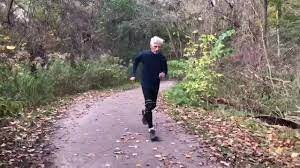
Polosa is a retired medicine professor at McGill University. He began to run during retirement after joining London’s Pacers Running Club, who he ran three marathons during the ’90s.
After his third marathon, Polosa took a break from running after losing the cartilage in his knees. Now at 93, Polosa is back running, wearing his knee brace and setting Canadian records after an Amazon advertisement recommendation from his wife Lynne Weaver. “They have become his best friends,” she says.
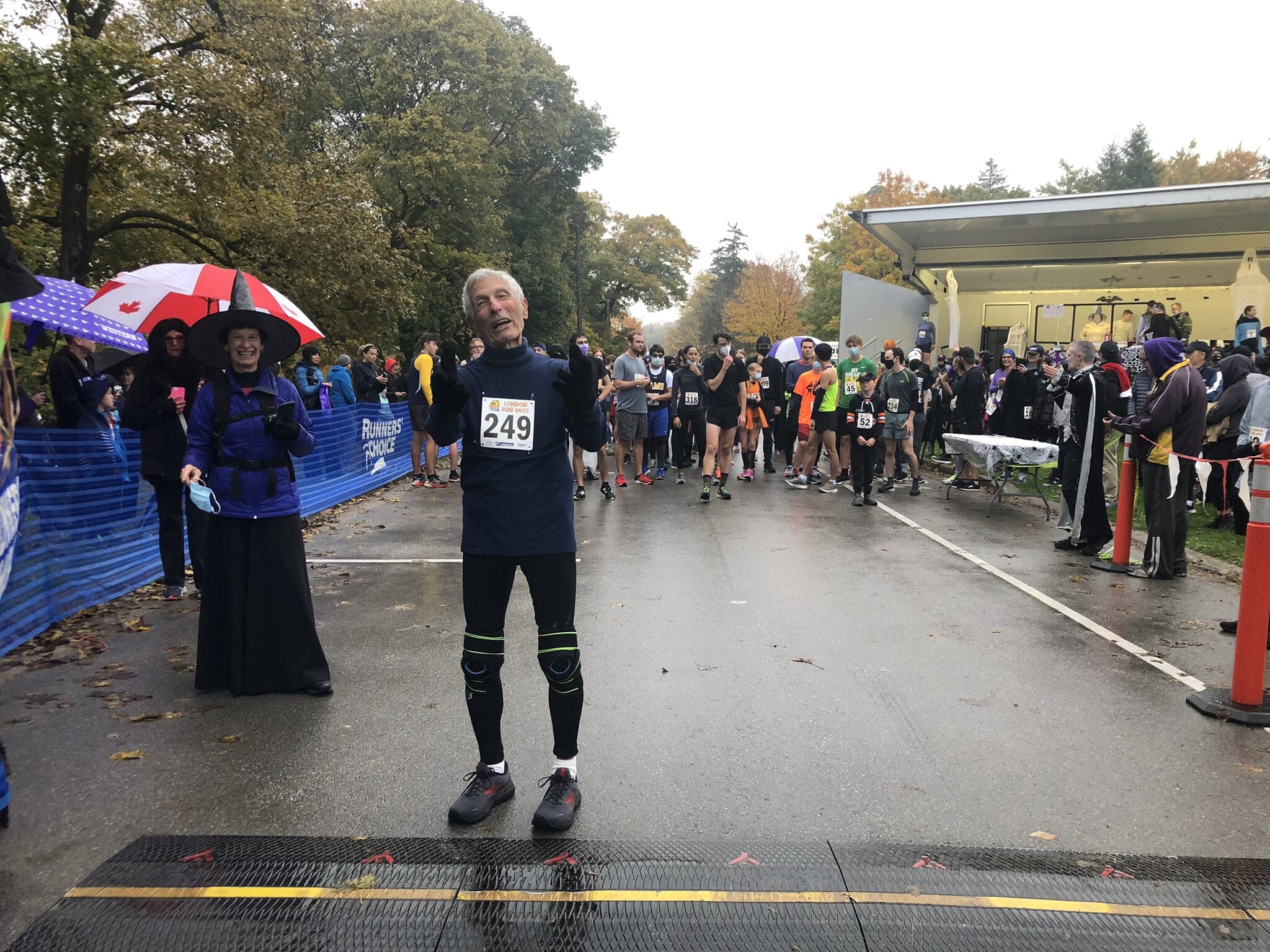
Polosa said in a video interview with CBC London that he doesn’t know why he likes running, but he enjoys running 5K to 10K every day to embrace nature. When questioned why most people his age aren’t running, Polosa said, “Most people are not running because they don’t think they can do it.”
Polosa also holds the M90+ Canadian masters’ mile record of 11:07, which he set in June of this year, but is eager to lower it after he said he started too fast during his last attempt.
by Marley Dickinson
Login to leave a comment
Four easy and effective ways to relax your feet and legs before your next run
It’s important to be properly prepared for your next run. A lot of people overlook the importance of warming up their muscles before they start running, and that can lead to injury. One way you can warm up your legs is by using a foam roller or rolling pin if you don’t have one. This will help loosen up any tight muscles, which will make it easier for you to run when the time comes!
1.- Massage Chair
You can use a massage chair to relax your lower legs and feet. You should be able to find this at department stores or online retailers like Amazon. It’s pretty self-explanatory how it works – you just plug the machine in, sit back and let it do its job! We recommend finding a premium massage chair that comes with different modes (tilt pressure, intensity of vibration/heat). These are good because then you’ll have a variety of options on which setting will work best for what your needs may be at that time. Once again, if you’re using these types of gadgets regularly we suggest wearing socks as opposed to going barefoot otherwise you risk damaging other parts of your body by slipping relative to the surface where the device is located.
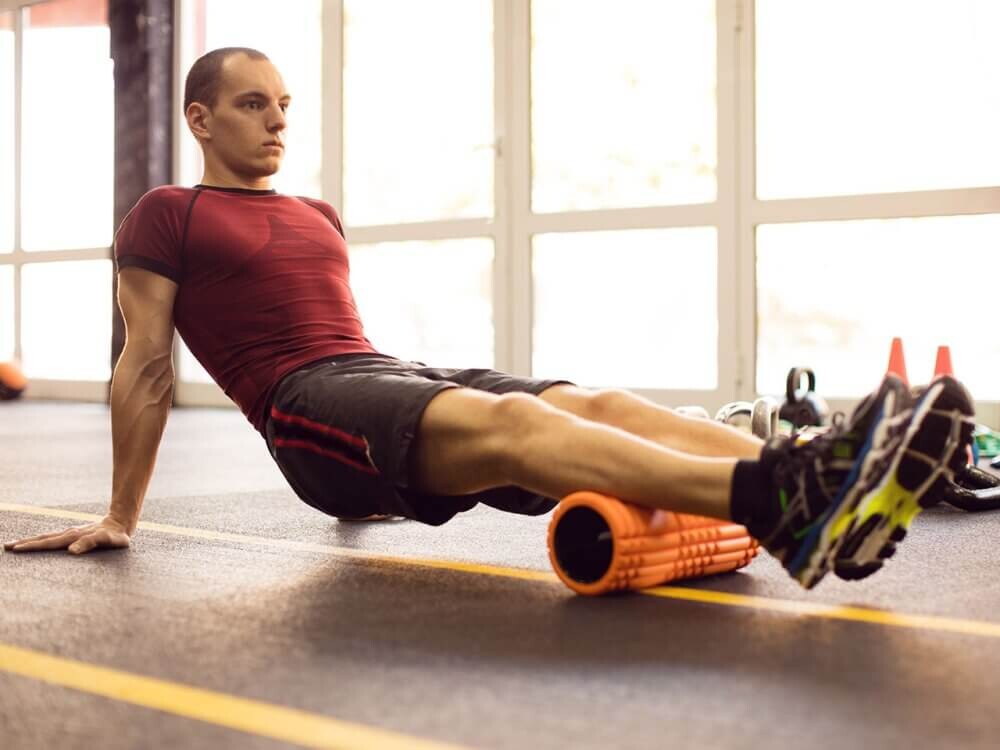
2.- Use A Foam Roller Or Rolling Pin
You can use a foam roller or rolling pin to roll out your calves and feet. If you don’t have a foam roller, use a tennis ball or rolling pin to do the same thing. When you find tender spots in your legs and feet (you will), hold that spot on the roller for 15-30 seconds without moving it – this is called trigger point therapy and can help relieve muscular tension. It helps to release tight muscles. It can help reduce pain, increase circulation and relieve soreness in your legs. For those of you who don’t run every day – it’s good if you’re recovering from an injury or haven’t done any exercise for some time (like me). You can use them on other parts of the body like the upper back as well!
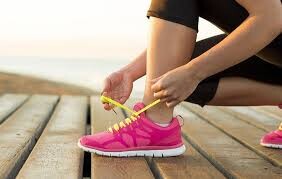
You should be able to find these at sports stores or by searching online retailers. We recommend buying one that is firm but not too hard so that it feels uncomfortable when used properly. If you have sensitive skin, try putting a towel over top first just to protect yourself before applying pressure with the implements mentioned above onto your calves/feet.
3.- Compression Socks
Compression socks can help keep your legs and feet warm, which is important to avoid injuries such as muscle cramps. A lack of blood flow to the muscles in your lower body can result in leg cramping during a run.
Compression apparel like calf sleeves or compression socks reduce inflammation and increase circulation that will assist with warming up those areas. This is especially helpful before running on cold days when you’re more susceptible to injury. Your clothing choices play an essential role as well because if you wear loose pants over top of your compression garments they could bunch up around your ankles making it hard for them to do their job properly – therefore reducing any benefits from wearing them.
4.- Yoga
Yoga has many health benefits, including relaxing your legs and feet. It’s no secret that yoga is good for you in the long run – but what some people don’t realize is how it can also benefit runners before they run! The best part about this solution is that it doesn’t require any extra gadgets or equipment to implement into your life. All it requires on your end is using up an hour of free time where you’ll stay off of your feet (yes – even if you’re lying down) to relax them after getting home from work or school so they are ready to go when the next day comes around again. Here’s a list of simple poses anyone can do at home: Child pose, Bridge Pose, Corpse Pose, Happy Baby.
You may also want to try the Surya Namaskar (Sun Salutation) sequence – this is a traditional yoga series that stretches your entire body and can help loosen up any tension in your lower limbs as it did for me! I suggest checking out some tutorials online before attempting them on your own so you know exactly what position requires what kind of flexibility/level of intensity.
To have a successful run, it’s important to take care of your body. One way is by taking the time before and after a workout to relax your legs and feet. This will help you recover more quickly from running so that you can get back out on the road sooner! A longer recovery period means less chance for injury because muscles are not overworked or strained while recovering which also prevents long-term problems like tendonitis or plantar fasciitis.
by Colorado Runner
Login to leave a comment
Vienna City Marathon winner disqualified for wearing shoes that are one centimetre too thick
Derara Hurisa is disqualified after winning the marathon by three seconds for wearing shoes not sanctioned by the event
Vienna is where Eliud Kipchoge ran his sub-two hour marathon
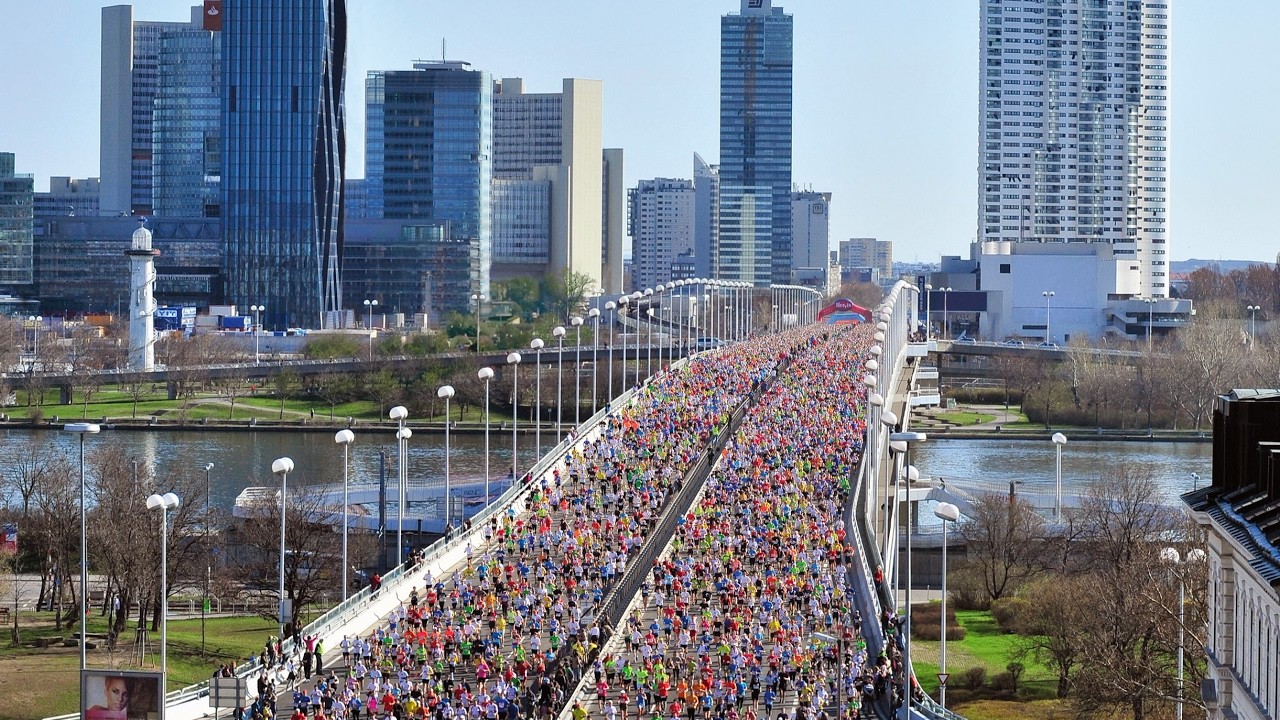
The winner of the Vienna City Marathon has been disqualified for wearing shoes that do not fit the race rules. Derara Hurisa ran the race in two hours, nine minutes and 22 seconds, but was stripped of his title when it was discovered the soles of his shoes is 5cm thick. It is one centimetre thicker than allowed in the race.
“Winner disqualified: The initial winner of the Vienna City Marathon had to be disqualified for wearing shoes which are not compliant with the rules. Ethiopia’s Derara Hurisa crossed the finish line first after 2.09:22,” the race Twitter account said.
“The sole of road running shoes has to be no thicker than four centimetres. Hurisa was running with a model that has a sole thickness of five centimetres.”
“Kenya’s Leonard Langat is now the winner of the Vienna City Marathon with a time of 2.09:25,” the account posted.
Hurisa, 24, made a name for himself last year by setting the Mumbai Marathon record, in 2.08:08.
Running shoes have been the centre of debate in the athletics world. Nike were the first to add a carbon plate into their sole, which in theory helped spring athletes forward. Fans and commentators alike wondered if getting an additional boost from shoes is within the ethos of running, where it is a test of fitness and not technology.
Since Nike’s invention, other brands have followed suit. Many records, including Eliud Kipchoge’s sub-two hour marathon, which was run in Vienna, have been set in carbon plated shoes.
The so called “technology doping” prompted the Olympics to set out guidelines for shoes allowed. In January 2020, the Olympics announced shoes with more than one carbon plate were banned, and so were soles thicker than 4cm.
live stream of event
https://live.s3.ap-south-1.amazonaws.com/vienna-city-marathon.html
Login to leave a comment
Vienna City Marathon
More than 41,000 runners from over 110 nations take part in the Vienna City Marathon, cheered on by hundreds of thousands of spectators. From the start at UN City to the magnificent finish on the Heldenplatz, the excitement will never miss a beat. In recent years the Vienna City Marathon has succeeded in creating a unique position as a marathon...
more...Time for Shelby Houlihan to come clean
Two things ought to happen now that the Court of Arbitration for Sport has issued a technically detailed but, in the end, common-sense ruling in the matter of Shelby Houlihan, the American distance runner, banning her for four years for nandrolone — through January 2025 — while thoroughly rejecting the ridiculous burrito defense.
One, Houlihan ought to come clean.

What most likely happened?
We don’t and won’t know until Houlihan admits whatever it was. But, see paragraph 128 of this very thorough 44-page ruling, citing the head of the Montreal anti-doping lab, Christiane Ayotte, who notes that oral precursors of nandrolone can readily be bought on the internet, even on Amazon, and that a chemical signature very much like the one Houlihan tested for was obtained five years ago when that very lab tested a product it had bought called “Nor-Andro Max.â€
Two, all the journalistic sheep who wanted to believe, who maybe still want to believe despite the overwhelming evidence against Houlihan, that there was no way, just no way, a white American distance runner affiliated with the Bowerman Track Club could test positive — all these people, and the readers they misled, ought to take a crash course in Doping 101 and the things people will say and do, meaning anything and everything, to avoid getting busted.
This entire saga, truthfully, has been pathetic.
This burrito defense has, from the get-go, stretched the bounds of credulity, and anyone who bought it — even for a second — needs to undergo a real-world moron test.
Do you also believe pigs can fly? (‘Pigs’ used advisedly here.) Do you think Abraham Lincoln is a vampire slayer? Are you super-confident you can beat up a grizzly bear?
Almost every single facet of Houlihan’s defense was — is — absurd.
To be clear: not blaming Houlihan’s lawyers for aggressively scheming up any and every avenue possible. That’s what they’re there for.
But the three-judge panel went to great length — again, 44 pages — to refute, carefully, virtually everything about it.
For instance:
Houlihan took a lie detector test.
She was asked, did you at any time knowingly ingest nandrolone? And answered no. She was also asked, did you intentionally ingest the drug nandrolone? And said, no.
But as the panel pointed out, here’s what she wasn’t asked: did you take doping substances at the material time?
Houlihan also submitted to hair analysis. All involved agreed that it proved that nandrolone injections could be excluded. But, the panel found, that analysis failed to take into account oral (so we’re all on the same page here, something you eat or drink) precursors of nandrolone, such as “19-nor-DHEA†and “nor-Andro.â€
Which is why it boggles the mind, truly, that an outlet such as Women’s Running would, in the second paragraph of its account of this ruling, prattle on this way:
“CAS decided that although Houlihan was a credible witness and brought ‘compelling character witness evidence in support of her defense,’ she failed to establish the source of the nandrolone that was detected in her urine.â€
This is the second paragraph?!
Who cares if Shelby Houlihan is or is not a nice person and can or cannot get through a lie detector when asked certain questions? That’s all but irrelevant when it comes to the science in this case. As for her “compelling character witness evidence?†Ha! That’s a complete misread of what is what. Offering statements or testifying on her behalf were, among others, her former boyfriend, Matthew Centrowitz, gold medalist in the men’s 1500 at the Rio 2016 Olympics, Courtney Frerichs, the surprise silver medalist in the women’s steeplechase a few weeks ago in Tokyo, and Karissa Schweizer, who competed in Tokyo in both the women’s 5k (11th) and 10k (12th), and if you don’t think the Athletics Integrity Unit took careful observation of who was in Houlihan’s inner circle, maybe you seriously do believe pigs can fly.
The first paragraph of the Women’s Running story, what in journalism circles is called the lede, also noted — accurately — the CAS observation that Houlihan’s explanation was “possible but unlikely.â€
As if that were justification.
Everything in life is possible.
But here’s what CAS also said, and be mindful that the burden of proof in this matter was on Houlihan, and so if this were a math contest, she had to get to 50.1, but instead her defense “presupposes a cascade of factual and scientific improbabilities, which means that its composite probability is (very) close to zero.â€
Herewith the cascade:
— Houlihan ordered a carne asada — that is, a steak — burrito at a food truck in Beaverton, Oregon, near Portland. For her defense to work, she would have had to have been served and eaten pork.
The entire defense rests on this premise. A wrong order. Which she then ate. But that’s not all.
— Because the pork would have not been ‘normal’ pork but, per the Houlihan defense, uncastrated boar.
— Except uncastrated boar gets into the U.S. food chain through completely different channels than pork. So for uncastrated boar to end up in the normal pork food chain, the boar must have been a specimen with undescended testicles. This is called ‘cryptorchid.’
At this point, this is already verging on bizarre if not crazy stupid. Undescended testicled boar. OK.
— Except there’s more. The cryptorchid is (or was) of a “small minority of uncastrated boars that — in addition — must have had elevated androgen levels.†That would be “abnormal†for 6-month-old pigs.
— More still. The pork product Houlihan allegedly ate, despite ordering steak, is pork stomach. Follow along here because this gets into butcher-level stuff. When people eat pork stomach, that stomach is stripped of the inner layer; only the outer muscle remains. Houlihan’s assertion was that uncastrated boars have elevated androgen levels. Except those are not found in the muscle. Those levels are found only in specific parts — the kidneys, testes or liver. Pork stomach, the panel said, has one of the lowest androgen levels.
— More science. The nandrolone metabolite levels in Houlihan’s urine were two to three times higher than the highest values in the literature after eating much more significant quantities of mature (uncastrated) boar — a product different from the alleged cryptorchid in question, which would have been slaughtered at six months.
— Agriculturally speaking, the carbon isotope signature of the metabolite in her urine was “fundamentally inconsistent†with the largely corn-based diet of commercial pigs in the United States.
— Finally, an expert witness said the chance of a cryptorchid ending up in the normal supply chain in the United States is “far less†than one in 10,000.
Beyond which, see paragraph 104 on page 30, and come on now, there’s this:
“The fact that IBP/Tyson (the plant where the food truck in Beaverton bought the pork meat from) does not operate a boar kill plant. Thus, it is ‘near zero chance’ that any boar meat would get mixed with conventional fresh pork products.â€
All this leaves the obvious question, doesn’t it:
if the slaughterhouse doesn’t operate a boar kill plant, and thus there’s essentially no chance of boar meat getting in the food chain with pork other than, hmm, aliens dropping in from Galaxy Starchaser Nebula X9 to surreptitiously teleport it in there and so the food truck had a “near zero†chance of having boar meat on the night in question and, besides, Houlihan ordered a steak burrito, anyway — what really happened here?
Time for Shelby Houlihan to come clean.
She likely will dodge this opportunity until after the Swiss Federal Tribunal issues the final no-go — understand that the SFT takes up procedural matters, not substantive, so her chance of success there is, again, “near zero†— but she would do the right thing, now, by coming clean.
Time, too, for her supporters, defenders and enablers to see the light. It’s tough when your purported heroes get tagged for doping. But before all of you go out and buy Floyd Landis’ book about how he didn’t cheat to win the Tour de France — oops.
Some of us have been down this road before. This burrito defense — this was creative, indeed. But that didn’t make it any smarter, or better.
Pigs don’t fly. That’s the truth.
Login to leave a comment
Run with 4x U.S. Olympian Meb Keflezighi on Global Running Day
Imagine arriving at the starting line of your race and getting some last minute advice from running legend Meb Keflezighi before the race begins.
Better yet, imagine Meb in your ear coaching you the entire way.
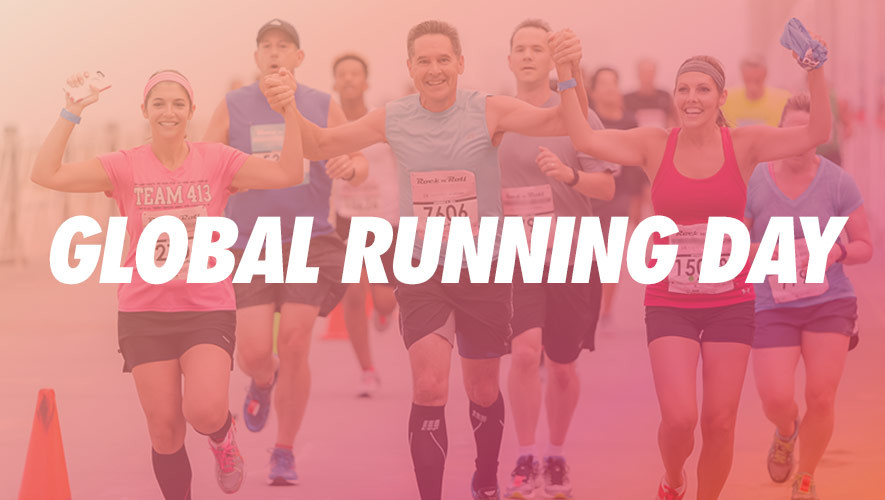
UCAN and Charge Running are partnering to create a one-of-a-kind virtual experience for runners with The Global Running Day 5K, poised to be the largest virtual 5k during this year’s annual celebration of running. The live event takes place Wednesday, June 2nd from 7-8 PM ET.
Meb will be featured on the mic alongside podcaster Ali Feller to motivate and entertain runners throughout their virtual 5K route.
“Running has given me so much opportunity in my life,” says Meb, a pastwinner of the Boston and NYC Marathons. “It’s an honor to be able to inspire others to get out there and chase their personal best or just enjoy being active on Global Running Day.”
The Global Running Day 5K will be hosted on the Charge Running app, which gives runners the feeling of an in-person road race with a live leaderboard, chat rooms and a live race announcer.
The entire experience is virtual which encourages participation from people all over the word.
“Partnering with UCAN on Global Running Day is an opportunity for Charge Running to do what it does best - Bring runners together from all over the world, in an engaging way and celebrate the love of running,” Said Julie Wallock, co-founder of the Charge Running App.
As part of the experience, a number of Olympic Trials qualifiers on Team UCAN will also be running the virtual race, so participants can test themselves against some of the fastest runners in the country.
“Our passion as a company is to enhance everyone’s pursuit of fitness,” says Shoba Murali, CEO of UCAN. “Combining the engaging technology of Charge Running with the innovative nutrition offered by UCAN is a great way for runners to take control of their fitness and health.”
For more information and to register for “The Global Running Day 5K, visit ucan.co/charge
About UCAN
Based in the US, UCAN is a company obsessed with the science of health and performance. UCAN enables athletes to gain confidence in their inherent abilities to surpass their performance by unlocking their body’s full potential through smart nutrition. UCAN products utilize SuperStarch®, a patented, slow-releasing complex carbohydrate that delivers steady, long-lasting energy without triggering an insulin response. Originally created for a child with a rare metabolic disorder, UCAN Energy Pouches, Powders, Energy Mix and Energy Bars are trusted by over 80 colleges, 40 pro teams, Olympic marathoners, elite triathletes, cyclists, group fitness coaches, thought leaders in health and performance, boxers, and recreational athletes for foundational nutrition to unlock performance. Learn more at ucan.co, and get the latest news in the UCAN world by following @GenUCAN on Facebook, Instagram and Twitter.
UCAN nutrition products are currently available in powder, pre-mixed, energy mix, and bar formats, in a variety of flavors, at 350+ specialty run, bike and tri stores around the country, Lifetime gyms, and can be purchased online at ucan.co or on Amazon.
About Charge Running
Charge Running is a mobile fitness app that provides LIVE coach-guided runs and races. With real-time coaches taking you through your workout, runners get updates on their current pace, average pace, distance, and more all while being ranked on a live leaderboard with other runners from all over the world.
Login to leave a comment
Two Treadmills Inside ... a Pub?! How This Runner Broke the 100-Mile Treadmill World Record
In his second 100-miler ever, he ran a 6:55/mile pace inside a local pub.
For the second weekend in a row, one of Zach Bitter’s 100-mile world records has fallen.
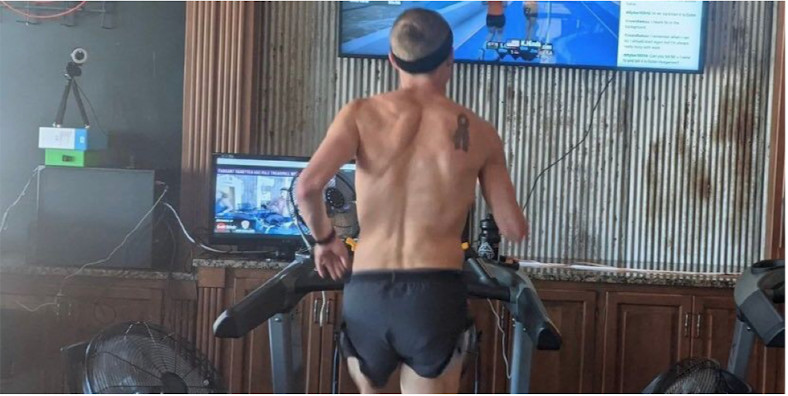
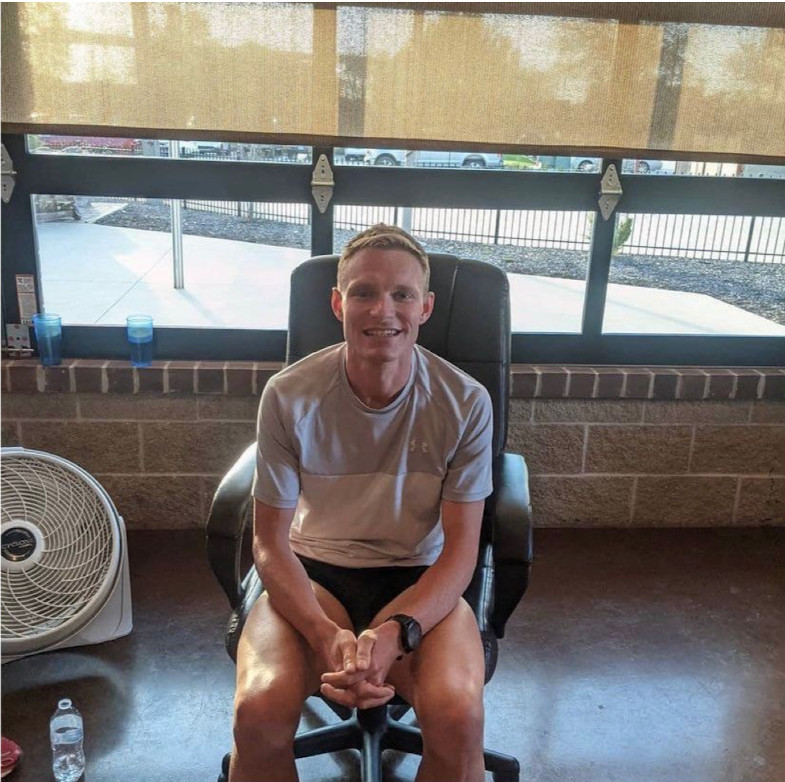
Taggart VanEtten, 25, of Morton, Illinois, smashed Bitter’s 100-mile treadmill world record with a time of 11:32:05. VanEtten’s average pace was 6:55 per mile, and he beat Bitter’s record by nearly 40 minutes.
That’s quite the accomplishment for only his second 100-mile run ever.
“I am so thankful that I am able to do this,” VanEtten told Runner’s World. “Every day, I wake up before 4 a.m. and do my first of two runs a day. ... I’m grateful to [have the time] to train, and I want to keep improving and go for the overall 100-mile world record.”
VanEtten, a PE teacher at Bartonville Grade School, is relatively new to the ultra scene. In college, he ran for Illinois Central College and competed in triathlons. But in November 2019, on only 23 miles of training a week, he ran the Indianapolis Marathon in 2:37:36. It was about 20 minutes off the men’s Olympic Marathon Trials qualifying times, so VanEtten pondered if he could run that mark with higher mileage and focused marathon training. But at that point, the 2020 Trials were less than four months away, so he decided to focus on making the 2024 Trials.
Last summer, he built his mileage all the way up to 200-mile weeks. However, he wasn’t able to put this fitness to the test with almost all marathons canceled because of the pandemic.
To fill that void, he chose an ambitious goal for November: a 100-miler.
“Well, I could sign up for this Tunnel Hill 100 miler, finish it, and never do another 100-miler again like many people say,” VanEtten said. “I had to beg the race director to let me in since there were a limited number of spots, and I was late signing up. 12:19:54 later, I crossed the finish line.”
That time is incredible for any 100-mile runner; in fact, it made him the fifth fastest American in history for the distance. It came after an intense training block where he ran three weeks on, one week off, peaking at a 258-mile week.
His newfound talent got him thinking about a new goal: What if he attempted the 100-mile treadmill record?
“I decided on January 2, when COVID-19 numbers were skyrocketing again,” he said, knowing that traveling to in-person races would still be risky. “I can’t get days off during the school year as a teacher, and I couldn’t fly anywhere, so why not train and promote this treadmill run?”
With that goal in mind, VanEtten spent every morning before school this winter and early spring on the treadmill. He completed additional runs after school and double long runs on the weekends, building up again to 200-plus mile weeks.
On May 1, he set up two treadmills, which he borrowed from a local gym, and a Zwift monitor in Seasons Gastropub, a local restaurant in Morton. There was also a space for his small supporters section, to keep him motivated for 11 hours and change.
VanEtten chose to run in the Hoka Carbon X 2 shoes, with Compress Sport pro marathon socks, Run Rabbit Fly Ease 2 shorts, and a few Amazon headbands to keep sweat out of his eyes.
Every three miles, VanEtten increased the incline to 0.5 and 1.0 for a quarter-mile each to switch up the muscles being used. Being on a treadmill for so long with the same motion can lead to problems in the legs and hips.
After smooth sailing for most of the day, VanEtten considered increasing his pace around mile 75, but he said he was luckily talked out of it by his crew. He said the building was heating up later in the day, and he could’ve paid the price.
“After that, I kept a mindset of telling myself, ‘How many times have you run 25 miles at a 7-minute pace? Or 20 miles?’’ VanEtten said. “It’s gonna hurt bad, but as long as I keep up nutrition, I should be done in three hours.”
When the final miles arrived, it became clear that VanEtten would get the record. From miles 89 to 99, his mentor and fellow local P.E. teacher ran on the treadmill beside him.
The final mile was just VanEtten. As the crowd counted down to 100, VanEtten patted his purple ribbon tattoo on his back—a tribute to his dad who passed away six years prior on April 20, 2015. The anniversary was the day before his run.
“My dad, man, he was a five-minute miler in 8th grade,” VanEtten said. “When I was in high school, he came to all of my meets and he thought I was nuts then. He passed away before I started my triathlons, but I just hope I’m making him proud. I’m working a job I love, I just bought my first house a month ago, and I’m pursuing my dream in running. I hope he’s looking down proudly.”
When he finally hit 100 miles and the record, VanEtten jumped off the treadmill and embraced his mom in an emotional hug.
“She said something to me. That I needed to finish this for my dad,” VanEtten said. “It was a moment I will never forget.”
After a brief champagne celebration and mingling with his fans, he made his way home to enjoy a shower and eat an entire medium-size pizza. He was off work Monday to recover, but was back in school on May 4 to see his students and the running team he coaches.
So, what’s next for VanEtten? He’ll race at Six Days in the Dome on June 18, chasing the overall 100-mile record of 11:14:56, which was set on April 26 by Lithuanian runner Sania Sorokin. The indoor track will be the third different surface VanEtten will run on in three 100-mile attempts.
“I’m not gonna be upset if I go out fast,” VanEtten said. “I want to go out like Steve Prefontaine at suicide pace because it’ll be a good day to die. That’s what I did at Tunnel Hill, and that’s what I want to do there. After I do that, I plan to enjoy my summer.”
by Runners World
Login to leave a comment
The most effective ways to burn fat while running
Are you looking to shed more fat on your next morning jog but aren’t sure how? While running is a great calorie burner on its own, there are a few ways you can tweak your cardio workout to maximize your fat-burning potential while staying fit. With these tricks, you can become the ultimate fat-burning machine that will help you reach your goal weight in no time.
Reduce Snacking Before Workouts
It’s easy to get carried away with carbo-loading before an endurance run. Carbo-loading is the perfect way to fuel your body before a workout, but if you overeat, you won’t be able to burn enough fat. Only carbo-load excessively before a marathon to boost your energy but keep as many calories off your plate as possible to avoid belly bloat and weight gain. On average, runners who have a pre-training snack are more likely to display lower levels of fat metabolism. Eat something in the middle of your run to keep your metabolism in working order.

Use Fat Burning Supplements
With fat-burning supplements, it’s possible to eat reasonable portions while still shedding unwanted pounds. Specific vitamins and nutrients can shift your body from fat-storage mode into fat-melting mode. For example, a vitamin D supplement helps to ensure body cells respond to insulin, which pushes glucose into the cells. A calcium, omega-3, and CLA supplement will help you shed fat faster. Thermogenic fat burners found on Amazon can also support healthy weight loss, especially if they contain the energy-boosting ingredient L-carnitine.
Focus on Running Uphill
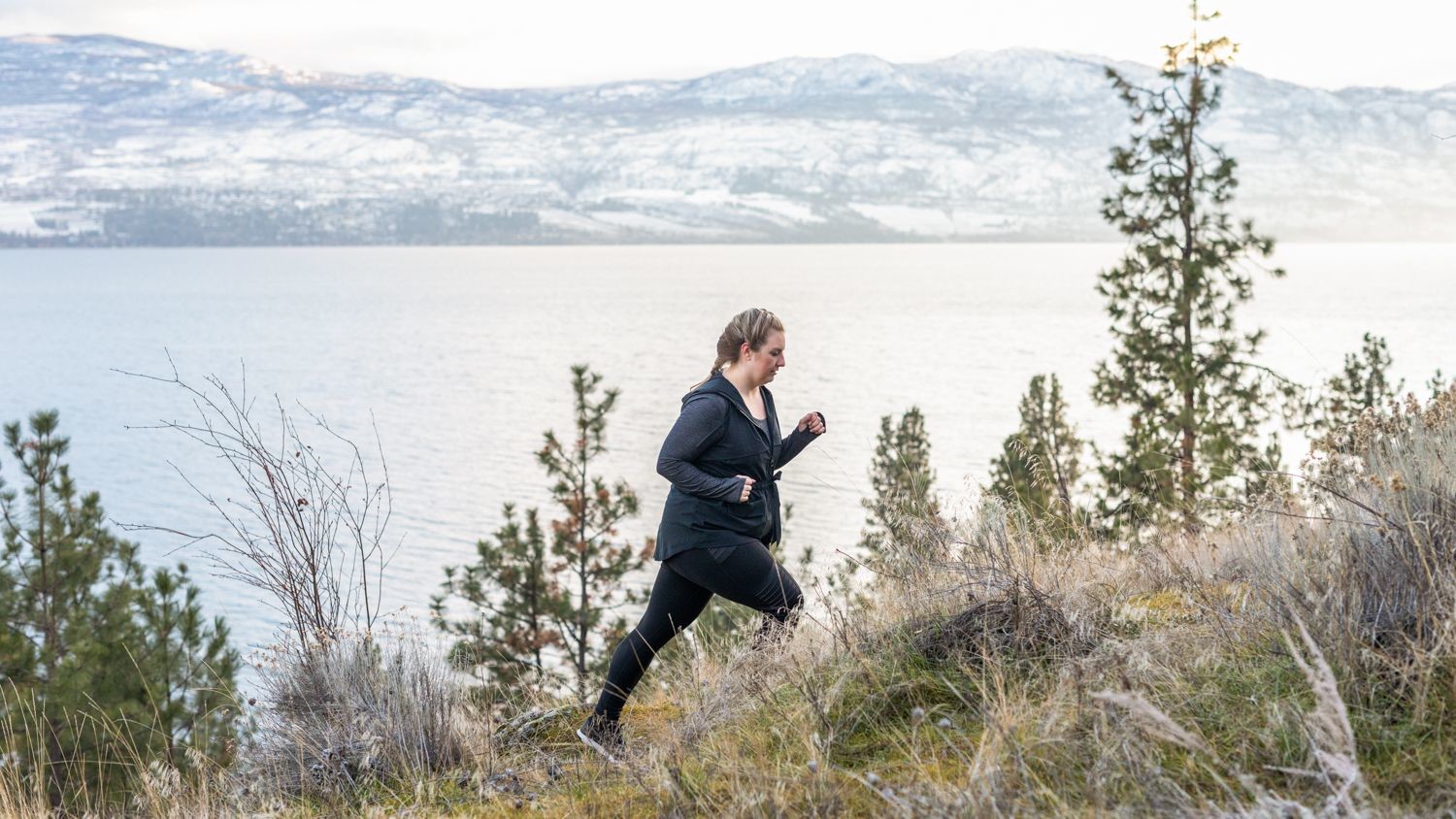
Runners typically jog on flat surfaces because they’re easy to find and simple to train on. However, if you give yourself a bit more of a challenge and run uphill, you’ll quickly notice the benefits of hill training. You’ll feel exhausted at a faster rate than on a flat surface, which is good news for your waistline. Running up a steep hill will land you in the fat-burning zone and increase overall performance in future runs, but be careful not to overexert yourself. After running up the hill, go back down to its base to rest before continuing your workout.
Try High-Intensity Interval Training (HIIT)
High-intensity interval training is a form of exercising that involves getting your heart rate to 90% of its maximum beats per minute. Through HIIT training, runners can instantly propel themselves into the fat-burning zone for a few minutes at a time. To do this, run as fast as you can for 1-2 minutes. Then, slow down to a jog, so your heart rate has the time to stabilize. Since your heart rate spiked quickly, your body’s working overtime to bring it back down. Regulating a quickening heart rate burns significantly more calories in 30 minutes than straight endurance jogging.
Resistance Training
The amount of weight you lose during a workout is directly tied to what you do before you start exercising. Strength or resistance training will improve muscle endurance and strength, but it also helps to burn more calories during a second workout and at rest. Runners with a low resting heart rate have a built-in fat furnace because their muscles require a lot of energy and calories to stay large. Creating a resistance training routine will benefit your overall fitness as well, so start lifting weights and performing squats to burn more fat.
Track Eating Habits
When you start to work out, you tend to consume more calories than you expect. Exercising multiple times a week will put you in a calorie deficit, which sets off an alarm in the part of your brain that regulates hunger. To stay on top of your eating habits, write down everything you eat inside a journal or on your phone. After the first week, examine where the bulk of your calories are coming from. Are you eating more junk food than you realized? Do mornings start well but end in a binge at night? Locate the possible problems of your diet and tackle them quickly.
by Colorado Runner
Login to leave a comment
Natural energy boosters that you can add to your daily routine
Natural energy-boosting drinks are made from plants and do not contain artificial additives. Artificial energy boosters on the other hand contain caffeine, artificial additives, and added sugar. These ingredients can have a lot of undesirable side effects. For instance, the caffeine in artificial energy drinks can cause anxiety and panic attacks especially if you take too much of it. Irritability, insomnia, and palpitations in the heart are other side effects that can occur due to the excess caffeine that is found in artificial energy drinks. The caffeine in these drinks is not natural unlike that in natural energy drinks.
The added sugar in the energy drinks acts as a stimulator and these drinks may contain as much as 20 teaspoons of sugar in each drink. The number of drinks in these drinks can be more than the one in a bottle of Coca-Cola. This sugar gives you a temporary energy boost but it also comes with many side effects. For instance, the excess sugar triggers your brain to release dopamine which is also produced by addictive drugs and this can make you get a sugar addiction.
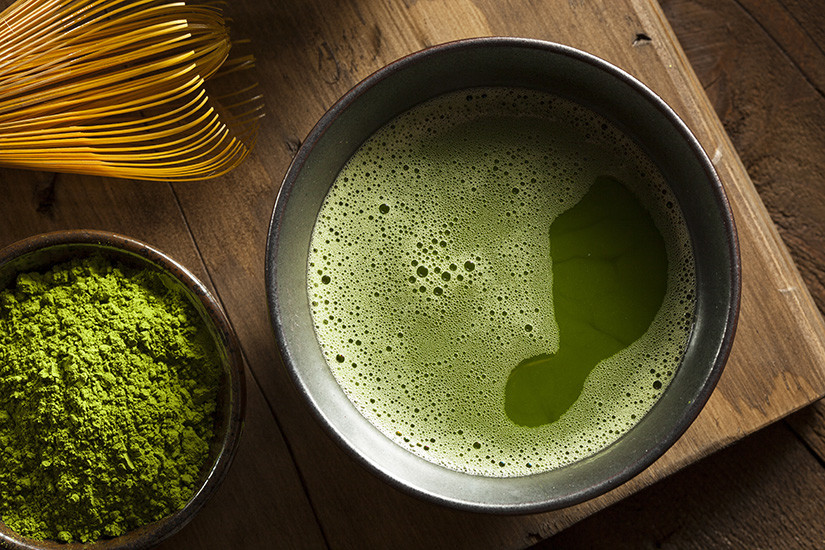
Sugar is also reported to increase the inflammation in the brain and trigger the release of a stress hormone called cortisone and this can lower your moods and make you feel sadder than normal. Since sugar also affects your brain function, you may have short concentration spans, reduced short-term memory, and the ability to learn and the sugar also puts you at risk of diabetes and other lifestyle diseases. Since natural energy booster drinks don’t contain these artificial additives, they do not give you these unwanted effects. This is why natural energy boosters are becoming more popular. Given below are some examples of natural energy boosters:
Guayusa Tea

Guayusa tea is an energy drink that comes from an evergreen tree called Camellia sinensis with caffeinated leaves mostly in the areas near the Amazon rainforest. Some of the areas where Guayusa grows are in the southern part of Colombia and the northern part of Peru. In Ecuador, there is an indigenous group called Kichwa that has used the Guayusa tea for more than a thousand years. The Guayusa tea is brewed like the normal tea.
Some of the benefits of Guayusa tea include providing energy and strength and therefore most people take it very early in the morning so that they can concentrate at work throughout the day. The Guayusa tea has been nicknamed the “night watchman” because hunters use it before they go hunting to help them stay alert. Other benefits of the Guayusa tea include improving concentration and focus and helping you to stay calm.
Matcha Tea
Matcha tea is also derived from the Camellia sinensis where these tea plants are covered for about 30 days to prevent direct sunlight. When the tea plants are covered, the amount of chlorophyll that they have increased, and therefore the plants get a green hue that is darker than the regular tea. This also increases the amino acid contents and these are building blocks for proteins. Upon harvesting, the leaves are separated from the stems and veins and then they are ground to make Matcha powder.
Some of the benefits of Matcha include alertness and mental focus, providing antioxidants that destroy the free radicals that cause chronic diseases. Matcha also enhances attention and memory and prevents damage to major organs like the liver and kidney. Matcha tea also reduces the risk of cancer, helps with weight loss, and boosts the health of your heart.
Green Tea
Green tea is made by pan-frying and steaming the leaves of the Camellia sinensis plant to heat them. These leaves are then dried. Drying of these leaves prevents them from turning brown and also preserves their green color and fresh taste. When the green tea is brewed, it can either be green or brown and it can have a toasted, steamed, sweet, or grass-like taste. The benefits of green tea include improving memory and concentration, helping with weight loss, reducing the risk of cancer, stroke, heart disease, and other chronic inflammatory conditions.
Turmeric Tea
Turmeric is a spice that is extracted from the plants of the Curcuma longa plant. Most of the turmeric supply comes from India but the plant is now being grown in many parts of the world. The turmeric powder or the grated turmeric root can be used to brew the turmeric tea. To ensure the purity and hygiene of your turmeric tea, you can grind the turmeric tea for yourself.
Some of the benefits of turmeric tea include boosting energy especially when you combine the tea with physical exercise, and anti-inflammatory properties therefore it helps in the treatment of inflammatory conditions like arthritis. Other benefits of turmeric include boosting the immune function because turmeric has some antioxidants. The tea can therefore help to fight bacterial, viral diseases. Turmeric tea also helps in the treatment of cancer, and liver diseases.
Yerba Mate
Yerba mate is a herb that is common in South American countries like Uruguay, Argentina, and Brazil. The tea is prepared in traditional gourds called “mate” where the yerba herb is grounded in. Coldwater is added to this powder to prepare an infusion together with hot water. A tea-like beverage forms when the yerba infuses into the water. The Yerba mate has caffeine which helps to stay alert and energized. Other benefits of Yerba mate include an increase in mental focus, weight loss, and enhancing performance in sports. The tea also helps to reduce inflammation.
Fresh Fruit Juices
Fresh juices are also important natural energy boosters. Some of the juices that you can take include orange juice and beetroot juice. Beetroots contain nitric acid which dilates blood vessels and improves the blood supply throughout the body while helping to reduce blood pressure. You can mix the beetroots with lemons and apples to increase the energizing effects. This is a drink that you can enjoy on a hot afternoon.
In summary, natural energy boosters do not contain the artificial additives that are in artificial energy boosters like excess caffeine and sugar. In addition to providing energy, natural energy boosters also have other benefits like reducing inflammation and free radicals in the body. These drinks have also been useful in the prevention of cancer and other chronic diseases like liver and kidney diseases. Some of the natural energy boosters include Guayusa tea, Matcha, green tea, beetroot juice, and turmeric tea.
by Colorado Runner
Login to leave a comment
Just One Step: a dive into why we run
Find out why humans run in this new award-winning documentary
For runners who hate the cold, ice and snow, it’s treadmill season, and when you spend hours upon hours running on the spot, you need to find a distraction. While we can’t help keep you entertained for every run, we do have you covered for about an hour and a half, thanks to the award-winning documentary Just One Step. This film, which features big-name ultrarunners like Anna Frost and Karl Meltzer, looks to answer the question of why humans run, diving into possible explanations in science, psychology and spirituality.
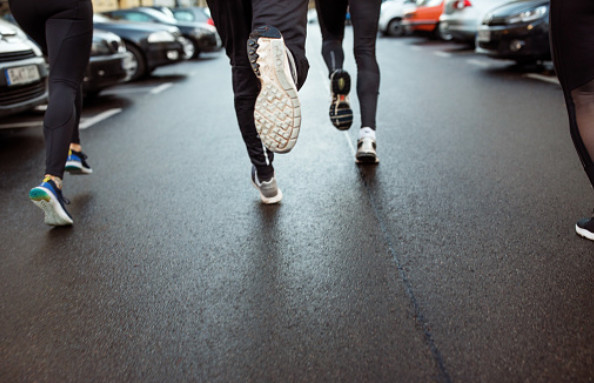
Just One Step is available now on Amazon, iTunes and Google Play, and it’s a great option to keep your mind occupied during your next long run on the treadmill.
“They are everywhere,” the film’s narrator says. “It doesn’t matter where you look.” He’s talking about runners, and it’s true — we are everywhere. No matter what town, city or country you visit, you’ll see people out for runs. But the film wants to know why. “What exactly are we as a species doing out there on the treadmill, track and trail,” the narrator continues. “Why do we do it?”
As the documentary notes, there is not one uniform answer to this question, and after exploring the world of running, it becomes clear that everyone has different reasons for entering the sport and different motivations to stick with it. For many people, though, they have been hooked on running ever since they started.
“It’s an absolute addiction,” says Frost. This can lead us to push past our limits, which viewers will see in the film, turning this leisurely and healthy activity into something dangerous. “For all the benefits we reap, there are consequences as well,” says Just One Step director Benjamin Keller. “It’s this intense, crazy system we’ve developed around running.”
We’ll never truly find the answer to why humans run. But it’s a fun question to consider, and one that can keep your mind busy next time you hop on the treadmill. To stream Just One Step, head to Amazon, iTunes or Google Play.
by Running Magazine
Login to leave a comment
CJ Albertson Just Ran a 2:09 Marathon on the Treadmill. He Doesn’t Care What You Think About It.
Albertson, 27, has been doing a lot of cool things recently. His highlights from the last month:
On November 1, he ran 50.4 kilometers on his treadmill in 2:42:00. The treadmill world record for 50k (and fastest time anyone had covered 50 kilometers, period) was 2:42:56.
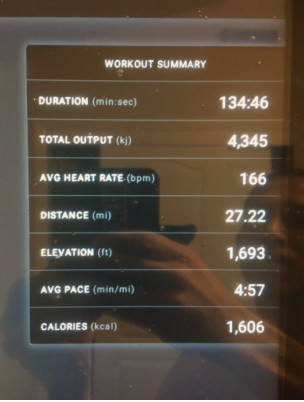
On November 8, he ran a 50,000-meter world best of 2:42:30 by running 125 laps around his old track at Buchanan High School in Clovis, Calif.
On November 15, he ran 37 miles on his treadmill at 5:56 mile pace — the longest run of his life.
His most recent effort was his most impressive yet: on Sunday, he ran an approximate 2:09:58 marathon on his treadmill, and felt so good, he added on an extra mile even faster.
Though Albertson knew what the treadmill world record was (2:17:56 by Tyler Andrews in June), he didn’t go into his run thinking of it as a world record attempt. He just wanted to see if he could run a 2:10 marathon on a treadmill.
So he went into his guest bedroom, opened the French doors, and set up a fan to get some air flowing from outside. He laid out his fuel: seven gels, one bottle of water, and one bottle of carbs and electrolytes. He cued up the Panic! At the Disco station on Amazon Music. Finally, he wheeled in his television and prepared to binge Community. He didn’t mind that his music would mostly drown out the dialogue.
“I’ve seen all the episodes like, five times,” Albertson says. “It’s just something that clears my mind.”
And then he set his Peloton treadmill to 12.1 miles per hour (2:10:00 marathon pace) and he ran. And ran and ran and ran.
Six miles in, he began to hurt.
“I’m like, okay, I’m probably not going to go a marathon,” Albertson says.
But he muscled through the rough patch, and as he neared the end, he was feeling good. So good, in fact, that he didn’t want to stop. So after passing 26.2 miles, Albertson cranked the treadmill up to its max speed of 12.5 miles per hour (4:48 pace) and ran one final mile before stepping off with a final time of 2:14:46 for 27.22 miles.
Albertson says that before Sunday, he’d never experienced the “runner’s high.” But after his 27.22-mile effort, it hit him.
“I was walking around the house pumped up, kind of like a fighter when you see them just hopping around, randomly yelling,” Albertson says.
That feeling, and the fact that he accomplished his goal of running an entire marathon at 2:10 pace, is enough for Albertson. He won’t be submitting the effort as an official world record; he didn’t record the run or calibrate the treadmill prior to the attempt. And though he set the grade to 1.5% to account for the lack of wind resistance (“I read something that said that’s about accurate for that pace”), he isn’t going to waste time trying to figure out what the performance was worth. (Albertson thinks he came through 26.22 miles in just under 2:10 — he set the treadmill to 4:55 pace for the final mile of his marathon (2:10 pace is 4:57 pace)– and says he split roughly 2:09:50 from mile 2 to mile 27.22).
“That’s kind of the fun, that’s kind of the mystery — what was that effort worth really?” says Albertson. “I’ll never know. No one will ever know.”
Albertson says he still considers his marathon personal best to be the 2:11:49 he ran to place seventh at the Olympic Trials in Atlanta in February, but is hoping to break 2:10 at the Marathon Project on December 20 in Arizona, where he’ll face Scott Fauble (2:09:09 pb) and Canadian record holder Cam Levins (2:09:25 pb), among others.
The fact that breaking 2:10 is now a realistic goal for Albertson, who works as a professor and head cross country coach at Clovis Community College, is fairly remarkable. He was a solid runner at Arizona State, posting personal bests of 7:59, 13:50, and 8:45 in the steeple, but by no means a future star; he never even qualified for the NCAA cross country championships (he did make it to NCAAs in the steeple as a junior in 2016, though he didn’t make the final).
After graduating in 2017, Albertson spent a year away from competitive running. But when he returned in 2018, training for the Two Cities Marathon in Fresno, he tried a different approach, throwing in several long runs of over 26 miles in his buildup. It worked: he won the race in 2:17:45, qualifying for the Olympic Trials.
Since then, Albertson has incorporated hard long runs of 26-32 mile into his weekly routine, doing them almost every Sunday when he’s in serious training. And he has improved drastically. In March 2019, he shaved 58 seconds off his personal best by running 2:16:47 to win the Modesto Marathon and followed it up with a world best for the indoor marathon, clocking 2:17:59 at the Armory in April. In the fall, he ran another big pb of 2:14:51 to repeat at Two Cities before running yet another pb of 2:13:40 a month later to finish second at CIM. Then he took almost two minutes off of that time to finish seventh at the Trials.
Albertson, who is self-coached, views his Wolverine-like ability to recover as a gift that must be nurtured. He tried traditional training in college, but it was only once he leaned into making these long, hard efforts a regular part of his training that his career truly took off.
“It comes really easy and natural for me to do what people would say [are] hard long runs,” Albertson says. “So I feel like I kind of have to take advantage of that, and it works for me. I was decent in college. But I was not seventh in the nation in college, ever. I wasn’t even close.”
Mentally, Albertson is also well-suited for the monotony of grinding away on a track or treadmill for hours on end. He likes running best when he doesn’t have to worry about splits or surges and can just lock into a pace, comparing it to meditation.
“I like the rhythm,” Albertson says. “A treadmill, you’re in perfect rhythm all the time. A track, you can get into that rhythm too. There’s just something about it that is relaxing but also allows you to push hard. And so I don’t have to think about anything, I just get the physical act of running hard and fast. There’s something really soothing about that to me.”
Albertson posts all of his training on Strava, and because many of his workouts are ridiculous, they tend to generate a lot of discussion (example: this five-page thread on LetsRun after Albertson ran 27 miles at 5:09 pace in February). Albertson says he sometimes gets a laugh out of seeing strangers on the internet overanalyze his runs, but for him, setting obscure records and logging mind-bending treadmill workouts are a way to have fun and keep training interesting. They’re not what the sport is about.
“Any race is gonna mean a lot mean than any sort of a record, because competing, that’s what the sport is: you race people,” Albertson says. “…It really doesn’t matter what you do in practice. When I line up December 20, it’s like, who cares? I don’t care what anyone else did [in practice], no one cares what I did. We’re just racing and the person who crosses the finish line wins.”
by Lets Run
Login to leave a comment
Keira D’Amato Is Trying to Break the American 10-Mile Record on Monday. It Could Cost Her Thousands of Dollars.
Since 2011, Keira D’Amato has been part of the race committee for the Credit Union Cherry Blossom Ten Mile Run, the famous Washington, D.C. road race held along the banks of the Potomac River. She’s held a few different roles over the years; recently she’s been responsible for coordinating speakers for clinics at the race expo. This year, Molly Huddle was one of the scheduled speakers, and D’Amato told her she believed Huddle could break the women’s-only American record of 52:12, set by Janet Bawcom at Cherry Blossom in 2014 (coincidentally, D’Amato held the finish line tape for that race). After telling Huddle about the record, D’Amato realized something: I can run that fast too.
Over the following six months, as D’Amato has risen from obscurity to one of the best distance runners in the United States, that statement has become blindingly obvious. After running a personal best 2:34:24 to finish 15th at the Olympic Marathon Trials in February, the 36-year-old has spent the summer and fall demolishing her pbs, from a 15:04 time trial 5,000 on the track in June to a 32:33 10,000 at the MVMNT Race Series in July to a 68:57 to win the Michigan Pro Half Marathon on October 28.
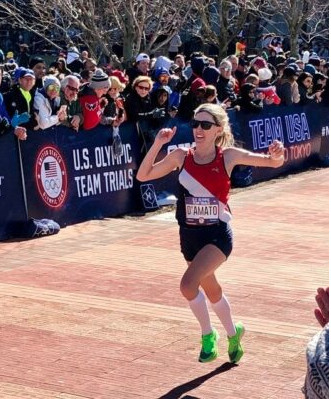
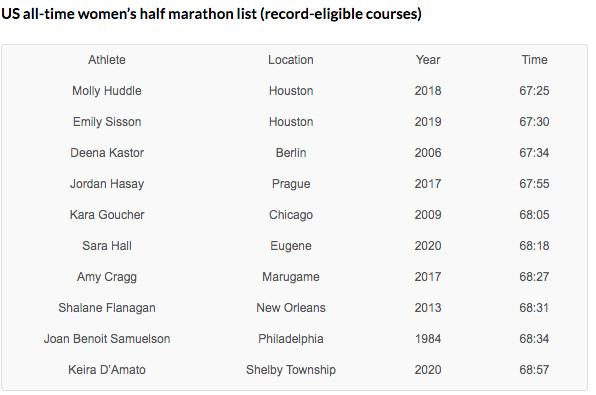
On Monday, D’Amato will try to back up her claim from the spring: she’s going for Bawcom’s record at the Up Dawg Ten Miler, where she’ll face a five-woman professional field that includes Olympian Molly Seidel. And that leads into one of the oddest statistics of a very odd year.
If D’Amato had broken the record at Cherry Blossom in April (which cancelled its 2020 edition due to COVID-19), she would have earned a $10,000 bonus.
If D’Amato breaks the record on Monday — or even if she doesn’t — she could end up out around $8,000.
That’s because D’Amato is covering most of the costs of the Up Dawg Ten Miler, which will take place in an undisclosed location in the DC area. Even though D’Amato is staging a race for five athletes rather than Cherry Blossom’s typical 17,000, several key expenses remain: getting the course USATF-certified and measured, securing park permits and road closures. It can add up quickly.
And then there is drug testing. USATF rules state drug testing is only required to ratify American records in events for which World Athletics recognizes an official world record. Since 10 miles is a “world best” distance, that means drug testing isn’t required to ratify an American record at the Up Dawg Ten Miler — but D’Amato is leaning toward including it anyway to avoid all doubts. However, based on the quote she received from USADA, it would run her an extra $3,000-$3,500. She hasn’t made a final decision yet.
There is an online store selling race merchandise to help offset the cost of the event. And around 20 members of the CUCB organizing committee have also chipped in a total of $2,000 — and, more importantly, their time — so that D’Amato can chase the record.
“If there was a way to measure intensity per person, this race would be much more intense [than the Cherry Blossom Ten Mile Run],” says CUCB event director Phil Stewart. “We’re not dealing with getting 17,000 people entered in the race and moving them around or ordering as many porta potties or things like that, but this is a group of special individuals. I’ve spent a lot of time being consumed by making sure that we have all of the conditions set for the record to be accepted if the record is broken. If Keira or anybody breaks the record here, the worst nightmare would be that there was some little USATF rule that I didn’t know about that was required for an American record to be set.”
Stewart knows that feeling all too well; last year, Stanley Kebenei thought he had broken Greg Meyer‘s American 10-mile record at Cherry Blossom, only for it to be revealed that a set of cones had been improperly placed, making the course 240 feet short (CUCB still paid Kebenei the $10,000 bonus).
With no mass race entries to fund the Up Dawg Ten Miler, CUCB will lose money on the event. But it’s worth it to Stewart to support D’Amato, whose meteoric rise he has followed first-hand — Stewart was among a group of CUCB committee members who traveled to Atlanta to support her in the Trials in February.
“One of the things that has been fun about [this event] is that in a time when there’s so much downbeat news, I think a lot of people have gotten excited about working on something that’s upbeat,” Stewart says.
And D’Amato? Well, in keeping with her carefree, laid back demeanor, she’s trying not to think about the cost and electing to focus on the positives. Five fast women (Susanna Sullivan, Bethany Sachtleben, and Emily Durgin round out the field) are gathering on Monday at 8 a.m. to race 10 miles. There will be a free live stream, with commentary, on the CUCB Facebook page. This should be fun, right? No. This will be fun.
“For me, it’s not about the money at all,” D’Amato says. “Right now when everyone’s starving for motivation and opportunity, I felt like this would be a service to the running community. And it fell in line really perfectly with my training too.”
Keira D’Amato’s return to competitive running began with a joke. Which, if you know anything about D’Amato, could not be more fitting.
D’Amato loves all things humor. The name of Monday’s race, Up Dawg, was her idea — a nod to a joke from The Office. When D’Amato joined Strava a few years ago, she began using jokes or puns to title her runs. Sample entry: November 16. My cousin, a magician, decided to incorporate the use of trapdoors in his shows. But I think it’s just a stage he’s going through. She used to rely on her children’s popsicle sticks for material or by asking her Amazon Alexa, “Tell me a joke.” As she amassed Strava followers (she’s over 2,600 now), she began receiving suggestions from fans — which delights her to no end.
“You have no idea how awesome it is that when people hear a funny joke, they think, Oh, I need to send this to Keira,” she says.
D’Amato’s impishness was on display during Christmas 2016, when she decided to gift her husband, Anthony, an entry to the 2017 Shamrock Marathon, held in March in Virginia Beach.
“Who gives someone a gift of a marathon entry?” D’Amato says. “Because that means you have to start training a lot. It’s kind of a backhanded compliment gift, I guess. But then I felt a little bad, so I signed up too.”
D’Amato was no stranger to running. A four-time All-American at American University under coach Matt Centrowitz, she finished 6th at the 2005 NCAA XC champs as a senior, ahead of future stars Amy Cragg, Molly Huddle, and Jenny Simpson. She remains friendly with the Centrowitz family, and is even in a fantasy football league with Olympic 1500 champ Matthew Centrowitz — let’s just say both D’Amato and Centro are better runners than fantasy football managers.
“I think at one point, I was in second-to-last and he was dead last,” D’Amato says. “But I also think Centro does a whole bunch of them, so maybe in his other leagues he’s doing better. But it was either the first or second week, I played him, and I crushed him.”
After graduating in 2006, D’Amato (then known as Keira Carlstrom) spent a few years running for DC Elite, a post-collegiate group coached by Scott Raczko — better known as the coach of Alan Webb. By 2008, she had lowered her 1500 personal best to 4:22, but was in constant pain, beset by a series of stress fractures and ankle pain. Her issues were the result of a condition known as a tarsal coalition — an abnormal bridging of bones in the foot — but the surgery to correct it was not covered by her insurance.
So D’Amato “retired” and got a job at mortgage giant Freddie Mac. Even after undergoing surgery to correct her condition in 2009 (her new job had better insurance), D’Amato ran sparingly for the next seven years. In her first run back after giving birth to her daughter, Quin, in August 2016 (she also has a six-year-old son, Tommy), D’Amato couldn’t make it through a three-minute run without walking. Yet she steadily built up ahead of Shamrock, and despite hail, sleet, and brutal winds on race day, D’Amato blew past her pre-race goal of 3:25.
“I couldn’t run slow enough to do that pace,” says D’Amato, who ran 3:14.
D’Amato felt there was a lot left in the tank, and took her next marathon, in Richmond in November, more seriously. After running 2:47 there — just two minutes off the Olympic Trials standard — she knew it was time to return to serious training. She reunited with Raczko, and steadily dropped her times while balancing running with her career as a realtor. When she ran a pb of 2:34 to finish 15th at the Trials at age 35, it looked like the culmination of a remarkable three-year journey.
In reality, D’Amato was just getting started.
Since the Trials, D’Amato has run personal bests over almost every distance. Her 15:04 5,000 doesn’t officially count because it came in a time trial rather than a race, but it’s faster than the Olympic standard of 15:10 and would have ranked her 6th in the US during the 2020 outdoor season.
Her most impressive performance came in last month’s Michigan Pro Half Marathon, where she clocked 68:57, 47 seconds ahead of runner-up Emma Bates, a 2:25 marathoner who finished 7th at the Olympic Trials. That made D’Amato the second-fastest American half marathoner on the year, behind Sara Hall, and 10th on the US all-time list. She is now in very elite company.
by LetsRun
Login to leave a comment
Virtual Boston Marathon is about to be run
Missing: Boston’s raucous crowds and smiles for miles. Still there, sort of: Wellesley College’s iconic “scream tunnel” and the thunderous cheers along the finish line on Boylston Street.
The 124th running of the Boston Marathon finally gets underway next month, but virtually — meaning real runners will do the hard work, and an interactive mobile app will help augment their not-quite-authentic experience.
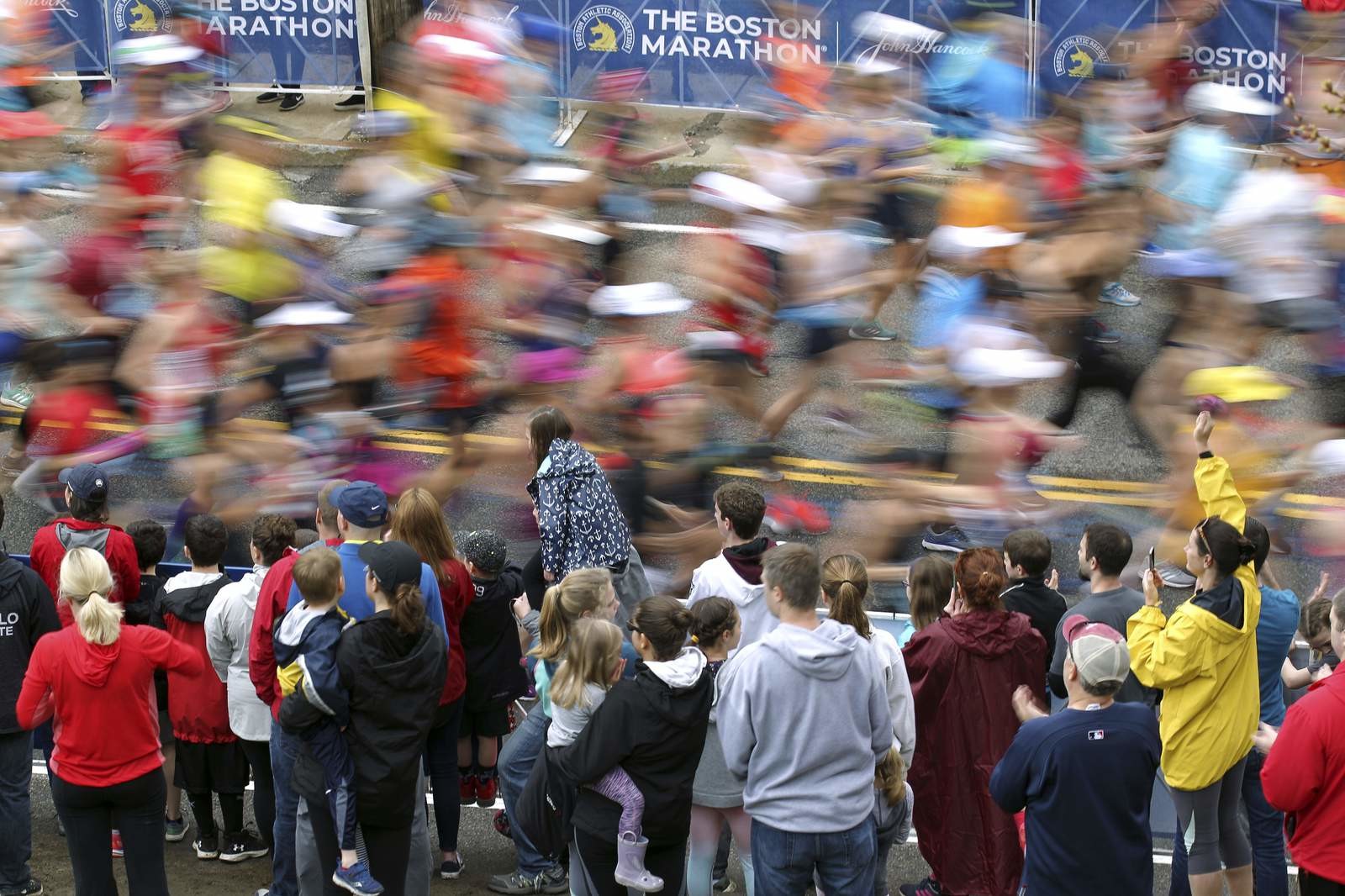
Rather than lining up in Hopkinton, Massachusetts, and making the long trek to Boston, athletes will run this year's marathon solo because of the coronavirus pandemic. A weeklong TV special and the new mobile app will showcase their stories as they go the distance on their own.
Amazon and WBZ-TV are teaming up on a “Boston Marathon Live” broadcast that will be aired nightly starting Monday, Sept. 7, through Sunday, Sept. 13.

Co-produced by the Boston Athletic Association, which puts on the marathon every year, the show will air at 8 p.m. EDT and again at midnight on television and be streamed on CBSBoston.com.
The marathon normally is run on a Monday in April, on Massachusetts' unique Patriots Day holiday, but was postponed to mid-September because of the pandemic. Then, at the end of May, it was canceled altogether — the first time in its 124-year history that the storied race in its traditional format was scrapped.
Instead, registered runners are being encouraged to complete the 26.2-mile (42.2-kilometer) distance by themselves — wherever they are in the world — and share accounts of their preparation, motivation and execution.
Athletes also will be able to use a mobile app the BAA is rolling out to upload their routes and finish times. The app includes audio cues that will sync with an individual runner's progress and play at key mile markers, such as the roar of the crowd as runners approach the irrepressible women of Wellesley, a marathon tradition, and the finish on Boylston in downtown boston.
“Boston Marathon Live” will be hosted by WBZ-TV anchor Lisa Hughes. Each show will feature interviews with marathon personalities, including champions, and profiles on people participating in the virtual edition.
by William J. Kole
Login to leave a comment
Boston Marathon
Among the nation’s oldest athletic clubs, the B.A.A. was established in 1887, and, in 1896, more than half of the U.S. Olympic Team at the first modern games was composed of B.A.A. club members. The Olympic Games provided the inspiration for the first Boston Marathon, which culminated the B.A.A. Games on April 19, 1897. John J. McDermott emerged from a...
more...The injured runner’s guide to training through a pandemic
How to cross-train with limited facility access
Injury is never fun, but it’s especially not fun when gyms are closed and local pools cut their lane swims off at 25 minutes in length. These COVID-19 safety measures have meant that injured runners are a little hard up for training facilities. Until they’re injured, runners certainly take for granted that their primary mode of exercise can be done anywhere. As a runner who found herself injured during a pandemic, I was thankful to already own a road bike, but I was also looking for other ways to workout. Because of my time cross-training, I’ve picked up a few tips and tricks for staying fit when you can’t hit the road, track or trails.
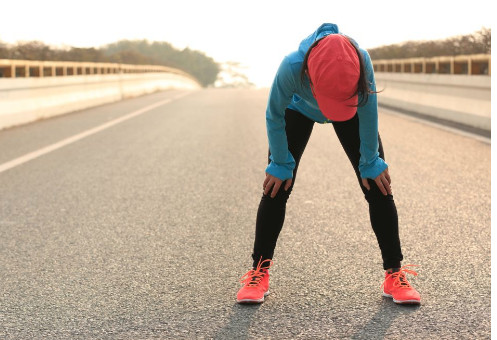
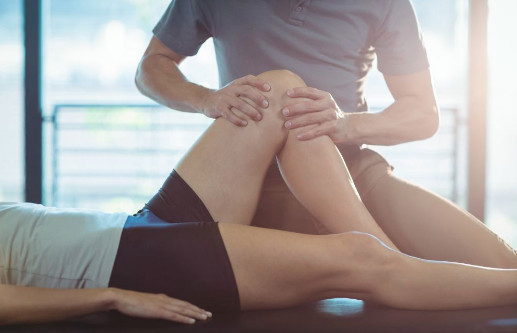
Buy some workout bands
One of the most common causes of injury is inefficiencies which can be remedied through strength training. If you’re looking to make a more sustainable change, Max Paquette, a biomechanist, recommends strength training over gait retraining. “Strength training builds resilience, which makes your body better equipped to handle stress and in turn makes you less likely to injure the tissue. The idea that only changing gait would be more beneficial than strengthening tissue isn’t always accurate.”
If you aren’t comfortable going to the gym (as it turns out, lots of Canadians aren’t), purchasing resistance bands is one of the cheapest ways to incorporate some “weight” training into your routine. These resistance bands run from around $10 to $35 and can be purchased on Amazon or at your local running store, or if you’re looking to support an elite athlete, 2017 steeplechase world champion Emma Coburn sells them on her website.
Lake jogging is your friend
Pool running is difficult to do right now, as many public pools have opted out of opening lane swims due to social distancing regulations. If you happen to live in an area with a lake or river nearby, lake jogging is a great alternative.
A few notes on water running: it’s harder in a lake, due to the current. Also, runners are encouraged to purchase a flotation belt (which cost around $40 on Amazon) to improve form and work the muscles that they actually use when running. To make the time pass faster, throw some intervals into your water jog. A few sets of 30 seconds on, 30 seconds off is hard work, and it gets you to 60 minutes of no-impact running in no time.
Cycling is also a great alternative
If you have access to a bike, take it for a spin. The bike is a great place to do interval workouts which mimic those you would do running. But it’s important to note that cycling can lead to very tight hips, so pay special attention to them when you’re rolling out and stretching after your workout.
Don’t forget to go on walks
If you’re able to walk without pain, getting out for a few kilometres is a great idea. This will help prepare your body for the load of running when it’s eventually able to handle it again.
Get treatment
Almost all practitioners are open again for in-person visits, including physiotherapists, chiropractors and massage therapists. If you’re comfortable, getting treatment is a great idea to expedite the healing process.
Focus on what you can control
To heal an injury quickly, runners should be doing their best to sleep a lot and eat well. This is easier said than done, but in most cases, focusing on the simple things can make a huge longterm difference.
by Running Magazine
Login to leave a comment
Stretching was once the cure-all for running injuries.
When it comes to running, experts want you to avoid static stretching
Stretching was once the cure-all for running injuries. Practitioners would ask injured runners if they were stretching enough, and if the answer was no they would offer more stretches. However, research is now suggesting that certain kinds of stretching aren’t great for runners, and may even be harmful for those who are prone to injury.
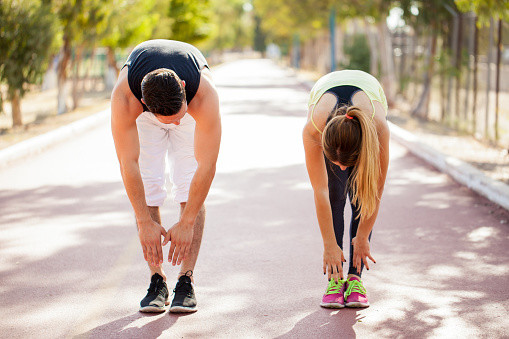
According to a literature review of several studies, there’s actually a correlation between lower levels of flexibility and better running economy, which refers to the amount of energy expended to maintain a particular speed. A study on untrained runners found that participants with the lowest flexibility happened to have the most naturally economic running styles. Researchers believe that this was a result of low range of motion, leading to better stabilization when the foot hits the ground. Basically, excessive range of motion means more energy is needed to stabilize muscles, and having a lower range of motion reduces that use of energy.
Carla Robbins is the owner of Vital Strength and Physiology in Calgary, Alta. She says she almost never prescribes static stretching to her clients – she’s all about strength work. “If stretching is something you do frequently, it’s technically possible to get more length in the muscle, but I don’t personally recommend it. I feel like there are other things that can check that box, for example, dynamic stretching or strength training. Strength training results in strength (and length), while also preventing injury.”
When To stretch - If static stretching (holding one position) isn’t recommended for runners, then what should they be doing to warm up? Robbins says ideally runners will integrate dynamic stretching (not holding the stretch, but moving with control in and out of the end ranges of the stretch) into their pre-run routine. A dynamic warmup will increase body temperature, which activates enzymes that are beneficial to running.
When not to stretch - Robbins says static stretching should be avoided by runners who are trying to prevent (or rehabilitate) an injury. “There isn’t enough evidence to support that stretching prevents injury,” she explains. “Some stiffness is required in the ligaments and muscles to run. For example, if you’re a hyper-mobile person with relaxed ligaments, you might be more prone to injury as your joints are more likely to move with loading. Lack of stiffness isn’t necessarily beneficial.”
Robbins also reminds runners never to stretch through pain. “Listen to your body, it’ll tell you if you’re doing something wrong.
”What about cramping?
When runners cramp up, many feel the need to “stretch it out,” but the research is divided on the topic. Muscle cramps can be caused by many factors including dehydration, fatigue and vitamin or mineral deficiencies. Leg cramps can also be a side effect of some prescription medications.
However, the reason for cramping and its exact cure eludes us. Several studies suggest that stretching out a cramp won’t hurt you, but it won’t necessarily help, either. If cramping is an issue for you, Hyland’s Leg Cramp Tablets, an official sponsor of the Boston Marathon, are one way to feel confident on the start line. Hyland’s Leg Cramps Tablets are taken without water, the quick dissolving tablets melt instantly in your mouth for fast-acting natural relief of leg, calf and foot cramps with no known side effects. They can be purchased on Amazon.ca and ship worldwide.
What muscles should runners pay attention to?
Robbins is a big fan of strength training, which both lengthens and strengthens muscles. In addition to making runners stronger, it’s a great way to prevent injury. “For example, if you’re super stiff and have no hamstring flexibility, but also continually injure your hamstrings, you could look at training that muscle,” she says. “Train at the end of a muscle’s range of motion (a deep deadlift is an example) so that you not only develop length, but also strength in the long term. Studies comparing stretching protocols to strengthening protocols have shown that a runner can improve injury-resilience with strength training and joint mobility without ever stretching.”
When strength training, runners should pay special attention to their quads and hamstrings, along with ankle and hip mobility. These are the areas where the most-common running injuries tend to happen.
by Running Magazine
Login to leave a comment
Brittany Runs a Marathon the movie, a twenty-something takes on the New York City Marathon after her doctor tells her to lose weight
Just in time for Global Running Day, Amazon Studios dropped a trailer forBrittany Runs a Marathon, a movie about a woman who sets out to run in the New York City Marathon.
The movie, which is based on a true story about a friend of the film's director Paul Downs Calaizzo, looks like it'll deliver all the feels. The trailer opens with Brittany (played by Jillian Bell) seeking a prescription for Adderall and her doctor suggesting she lose 55 pounds.
After finding that gym memberships are hella pricey (relatable), Brittany starts running outside and sets her sights on the New York City Marathon.
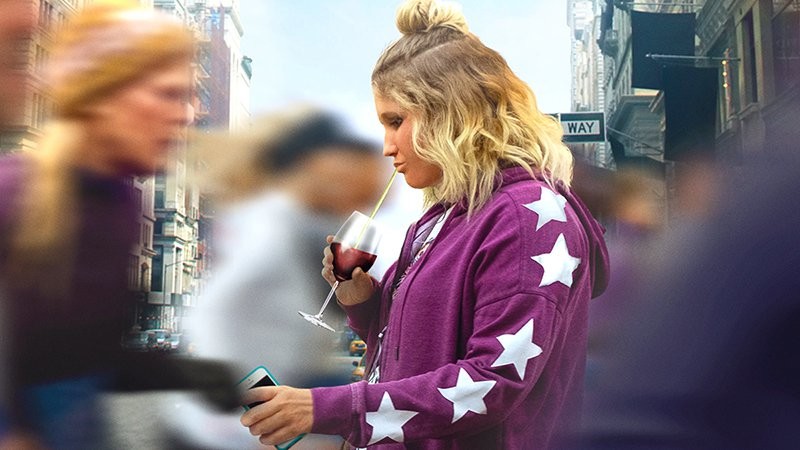
You can't really judge a movie by its trailer, but the film seems more nuanced than the typical woman-loses-weight-and-it-changes-everything formula. As the trailer progresses, Brittany does appear to lose weight. However, a voiceover toward the end of the preview says her journey "was never about" her weight; it was about "taking responsibility" for herself, suggesting a deeper overall takeaway.
A cast interview with The Hollywood Reporter also indicates that Brittany's transformation isn't ultimately attributed to her physical changes in the movie. "You find out that when you do get that money, that car, that body, that boyfriend, that you're not okay, because that actually wasn't the impetus for what needed to change. You needed to heal something on the inside," actress Michaela Watkins remarked during the interview.
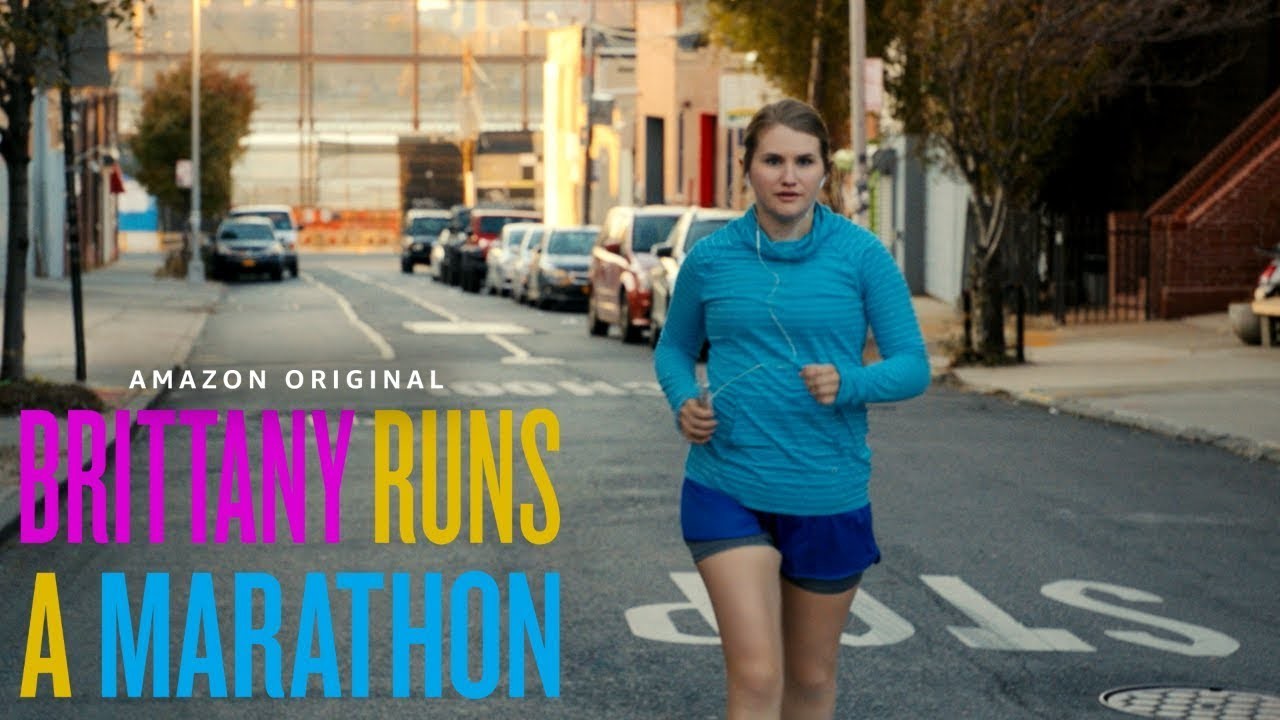
In case you need more proof that Brittany Runs a Marathon is gonna be good, the film got a positive review from Indiewire after its debut at Sundance, and won an Audience Award at the festival.
The movie will hit theaters a few months before the actual New York City Marathon. Mark your calendar now for an August 23 release date.
by Renee Cherry
Login to leave a comment
TCS New York City Marathon
The first New York City Marathon, organized in 1970 by Fred Lebow and Vince Chiappetta, was held entirely in Central Park. Of 127 entrants, only 55 men finished; the sole female entrant dropped out due to illness. Winners were given inexpensive wristwatches and recycled baseball and bowling trophies. The entry fee was $1 and the total event budget...
more...The Amazon has a mystical appeal to Craig, it is an extremely harsh and unforgiving environment.
Login to leave a comment
Calvin is set to take on the Jungle Ultra, a gruelling 147-mile run over the Andes and into the Amazon
Login to leave a comment


